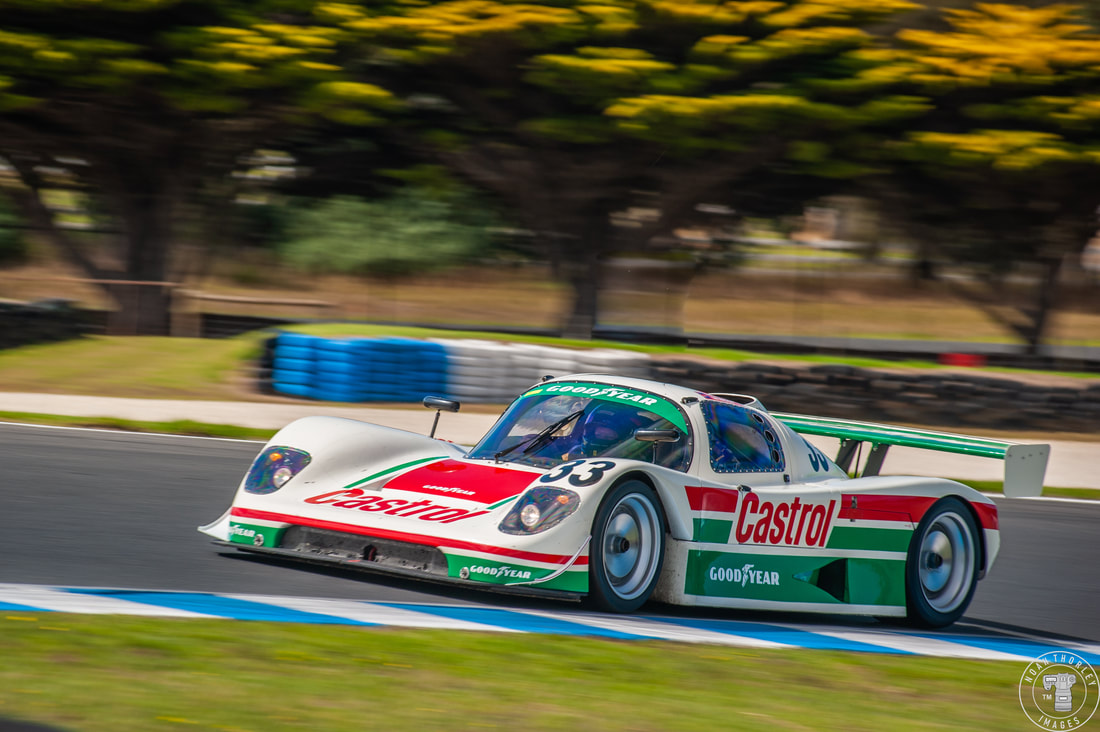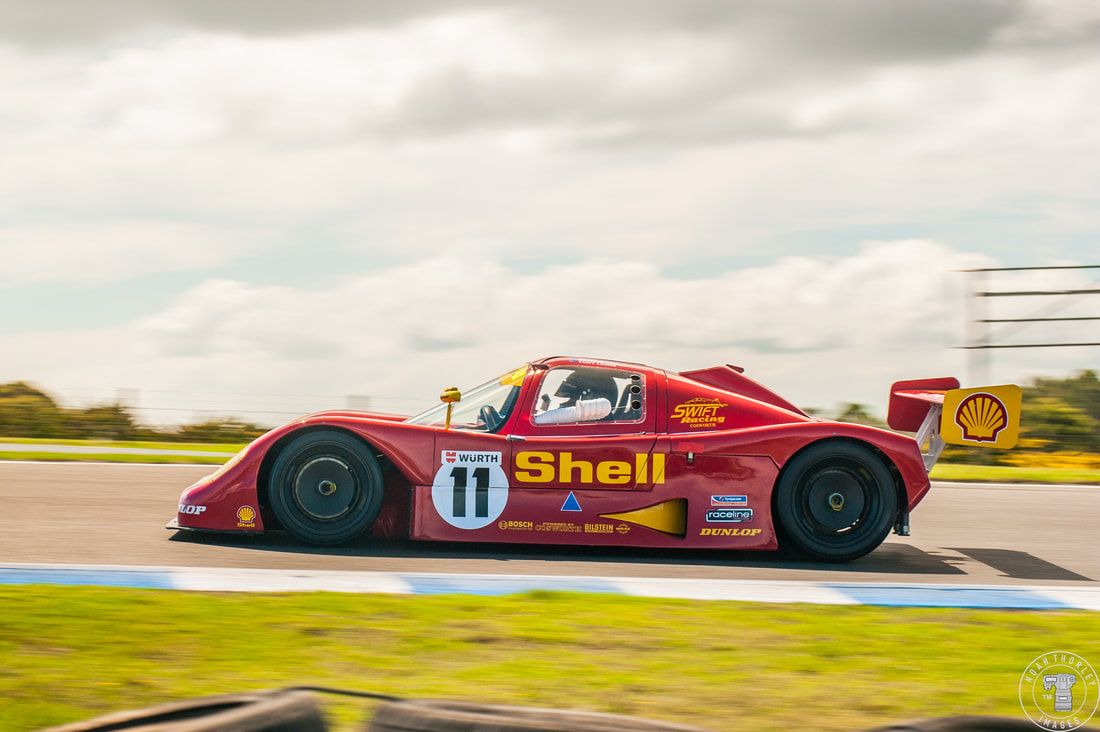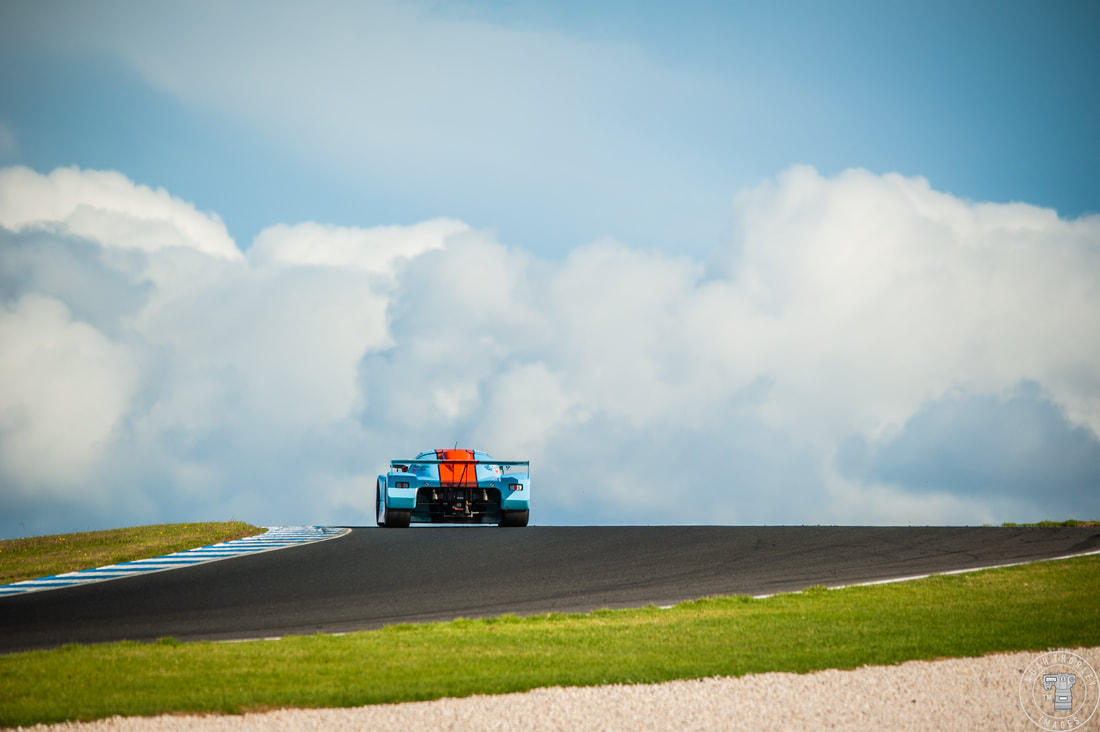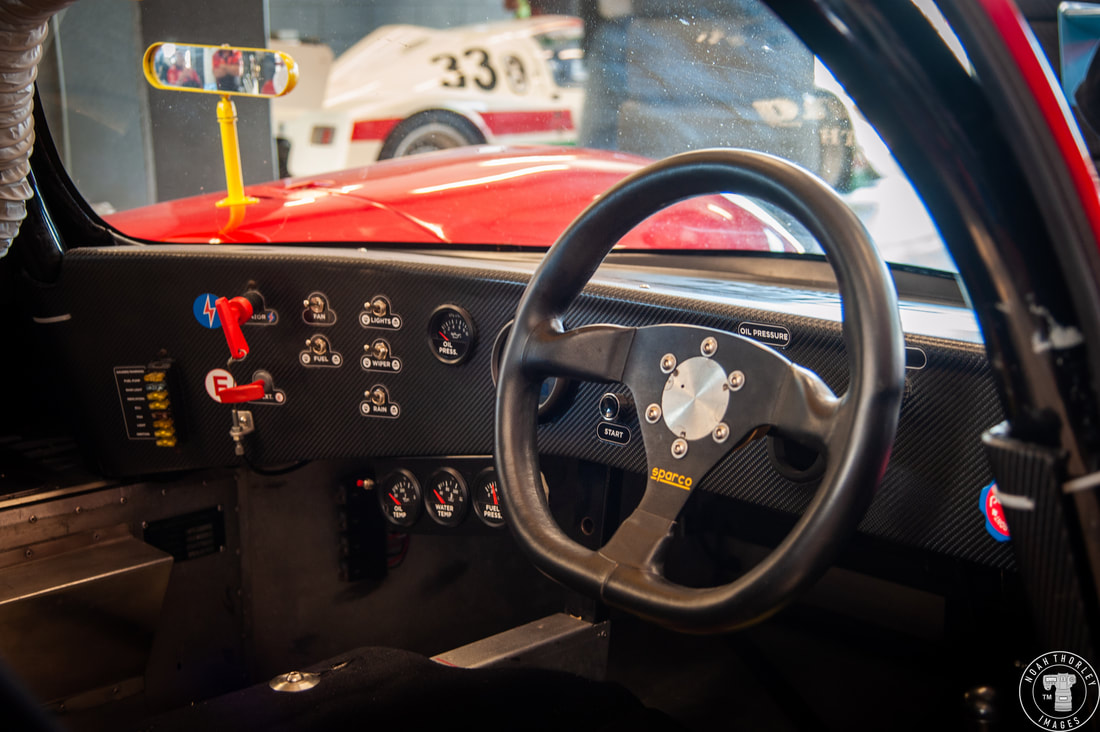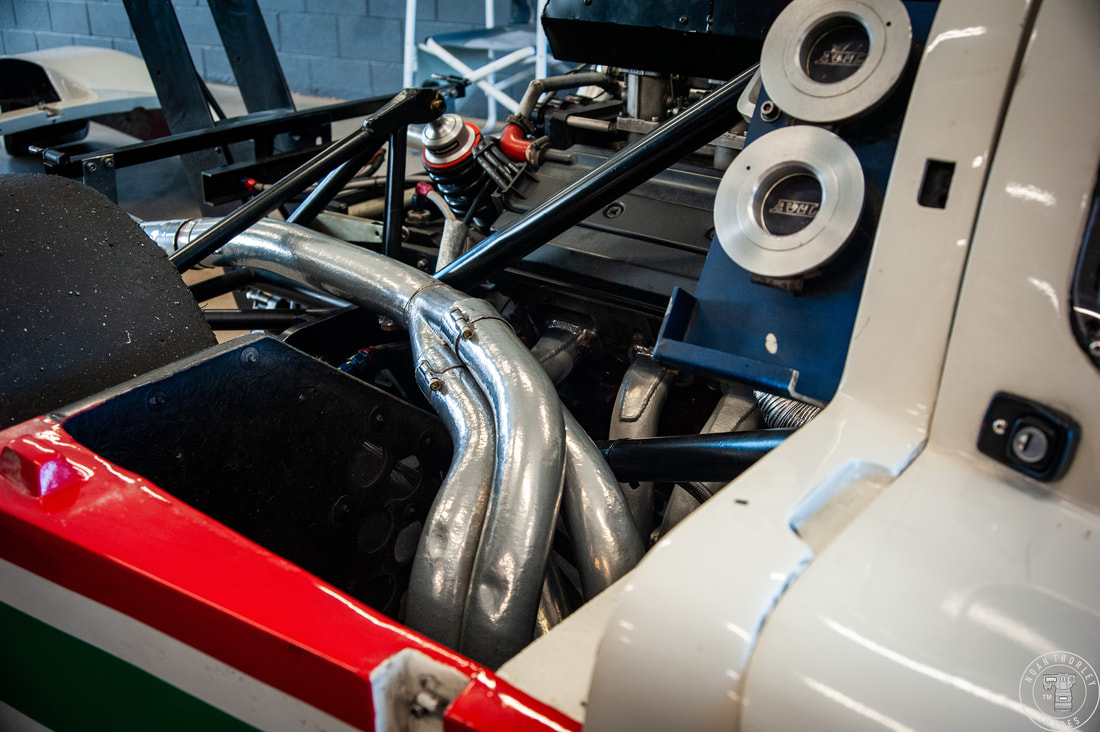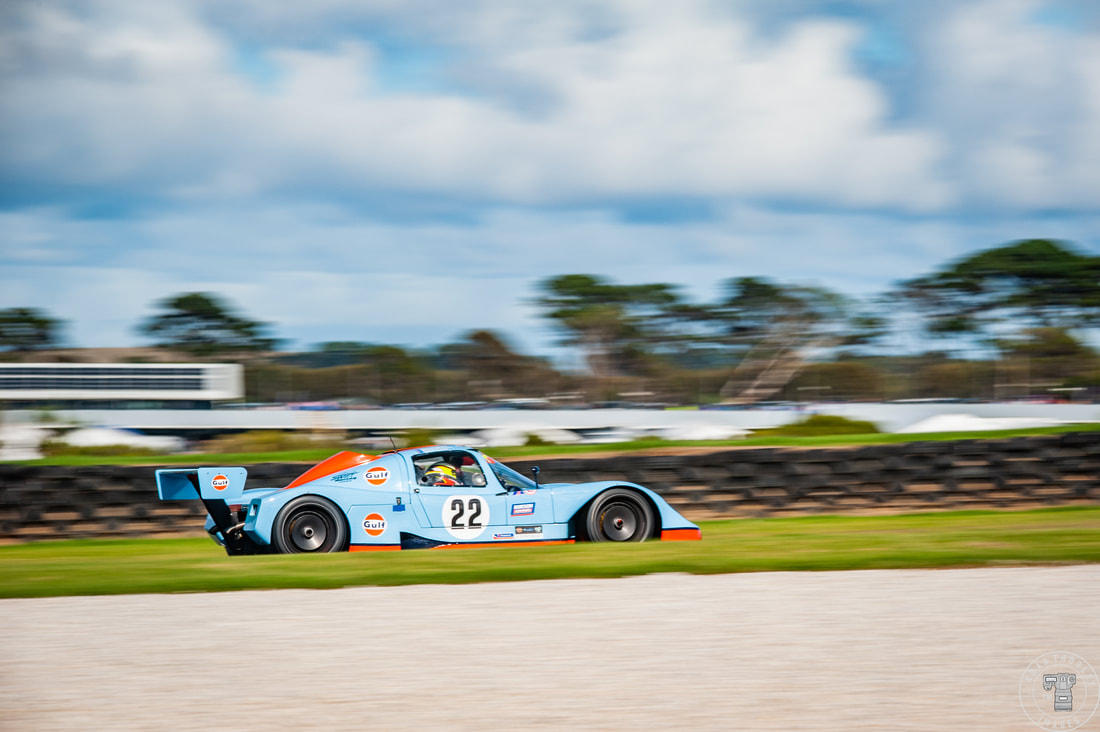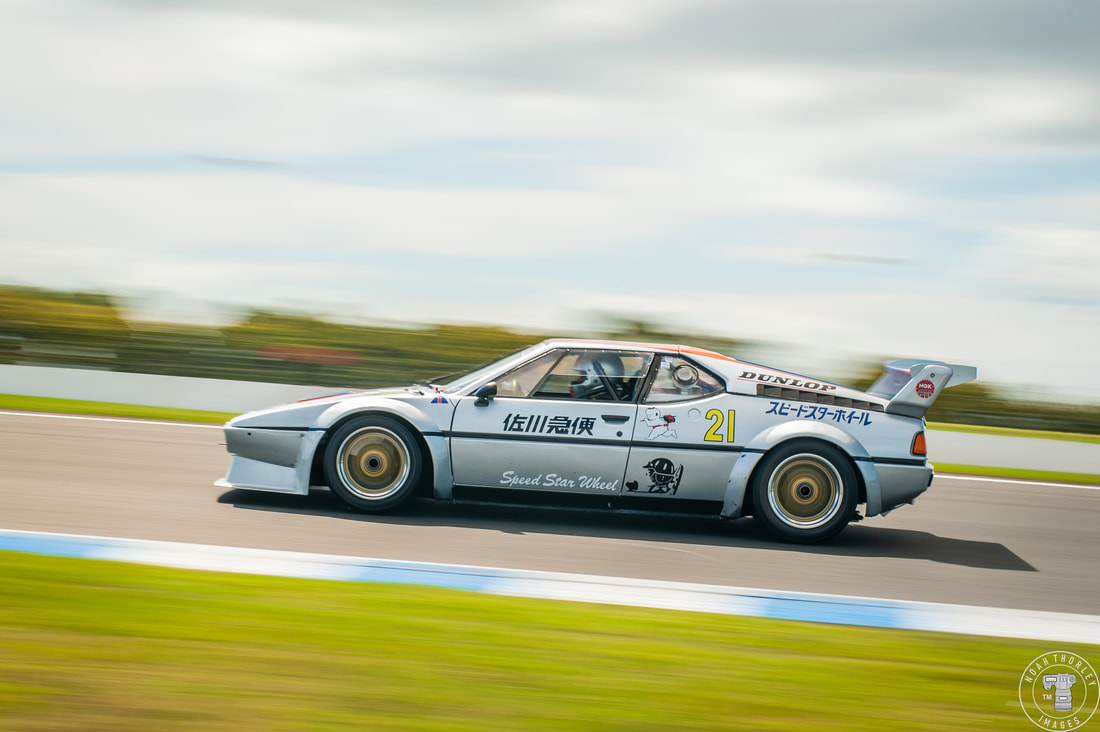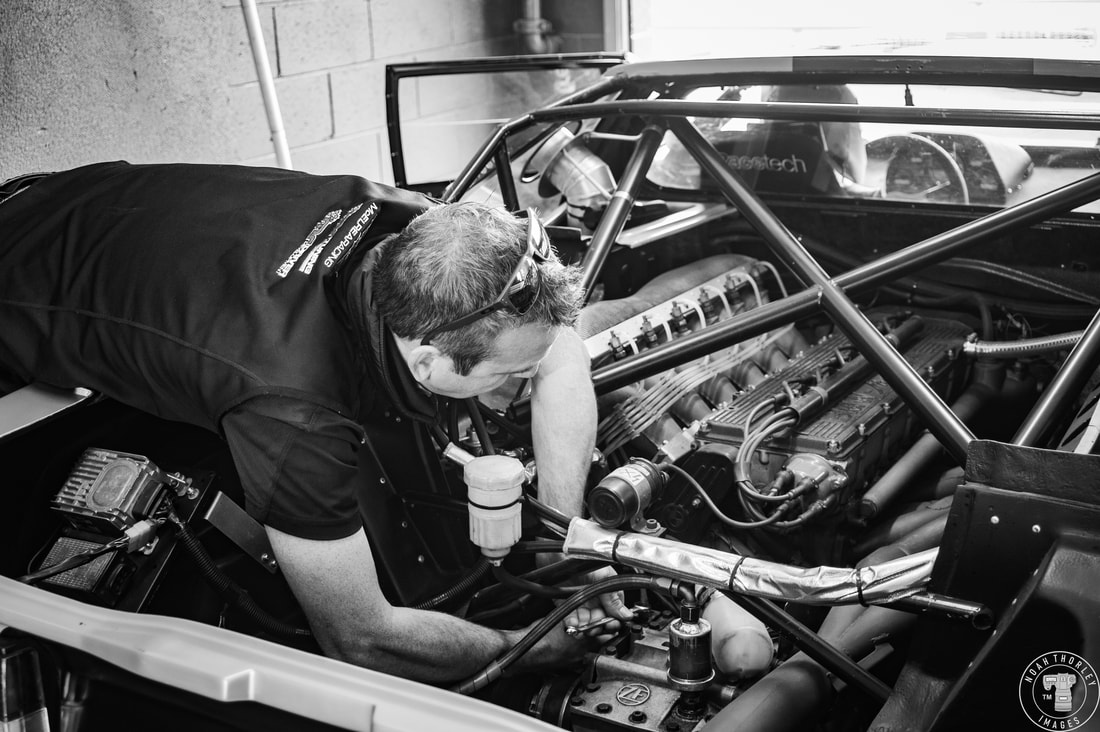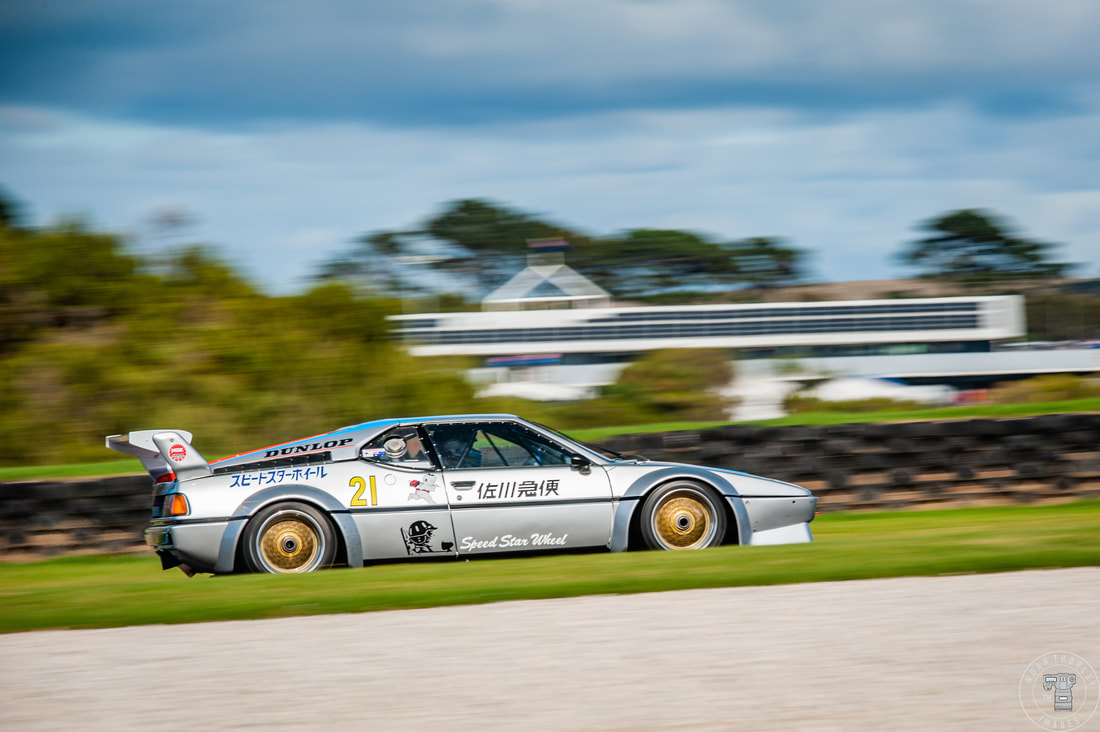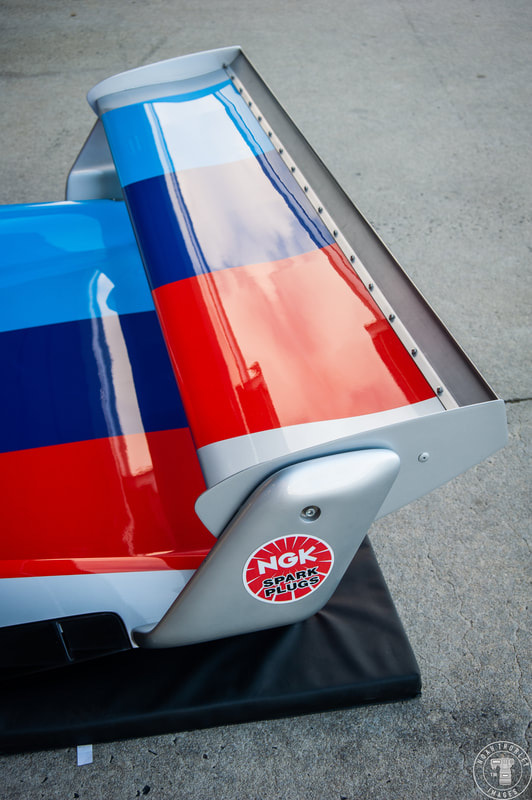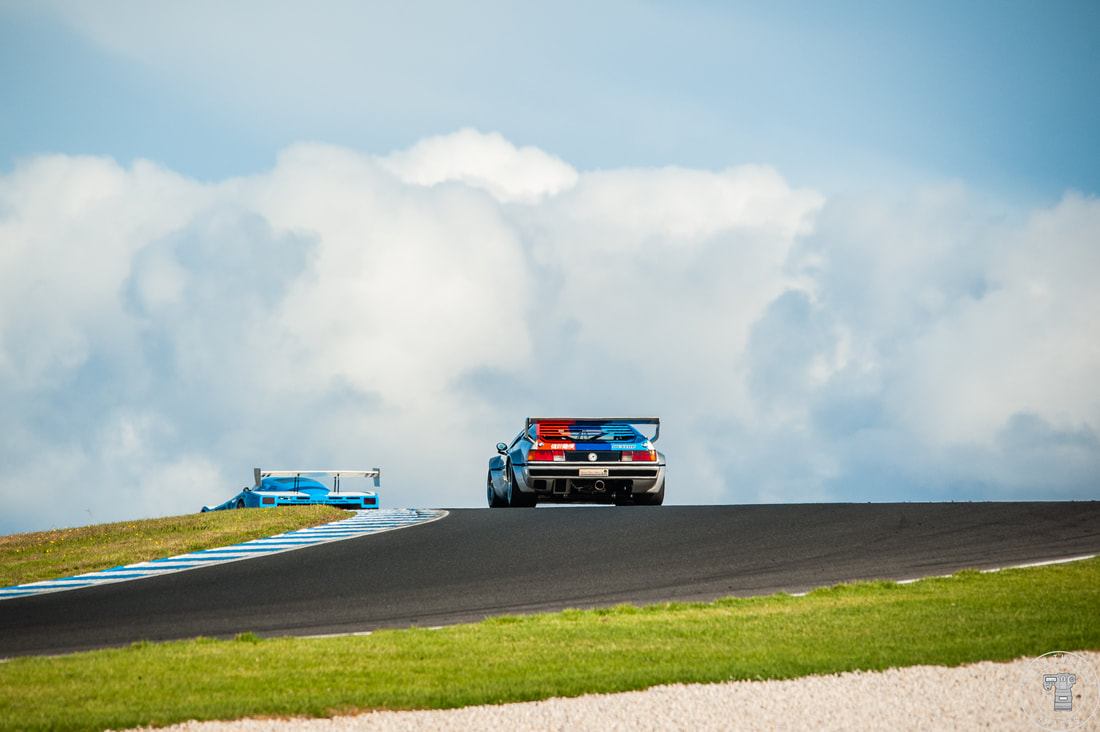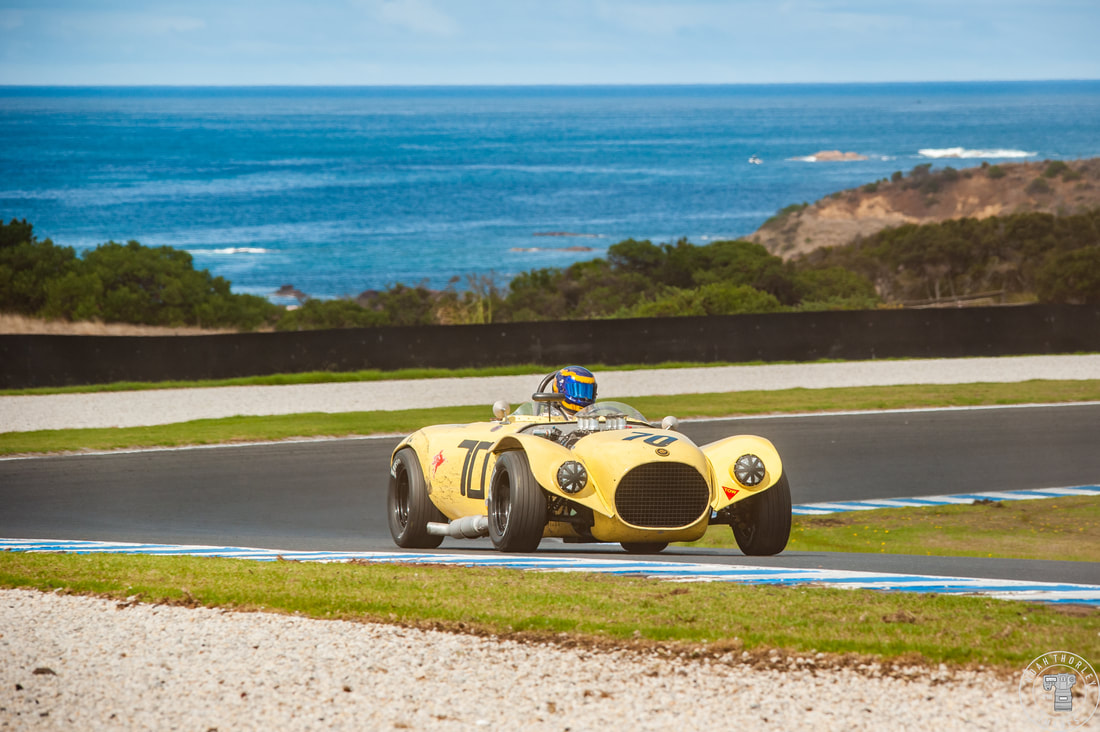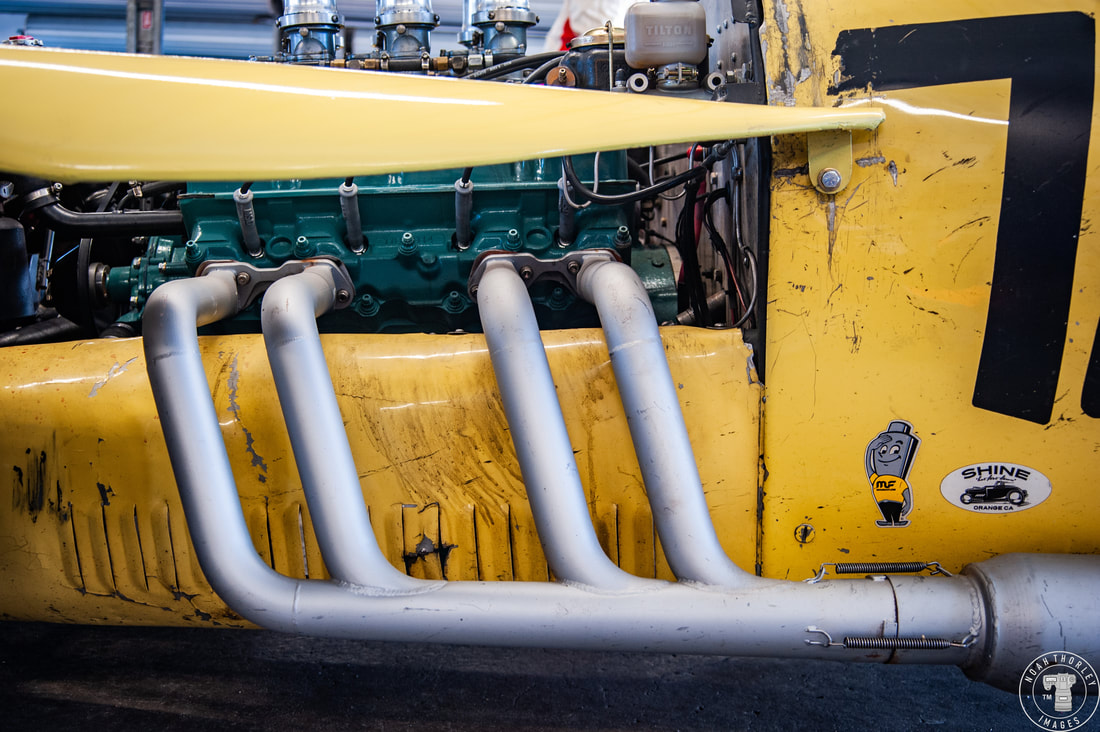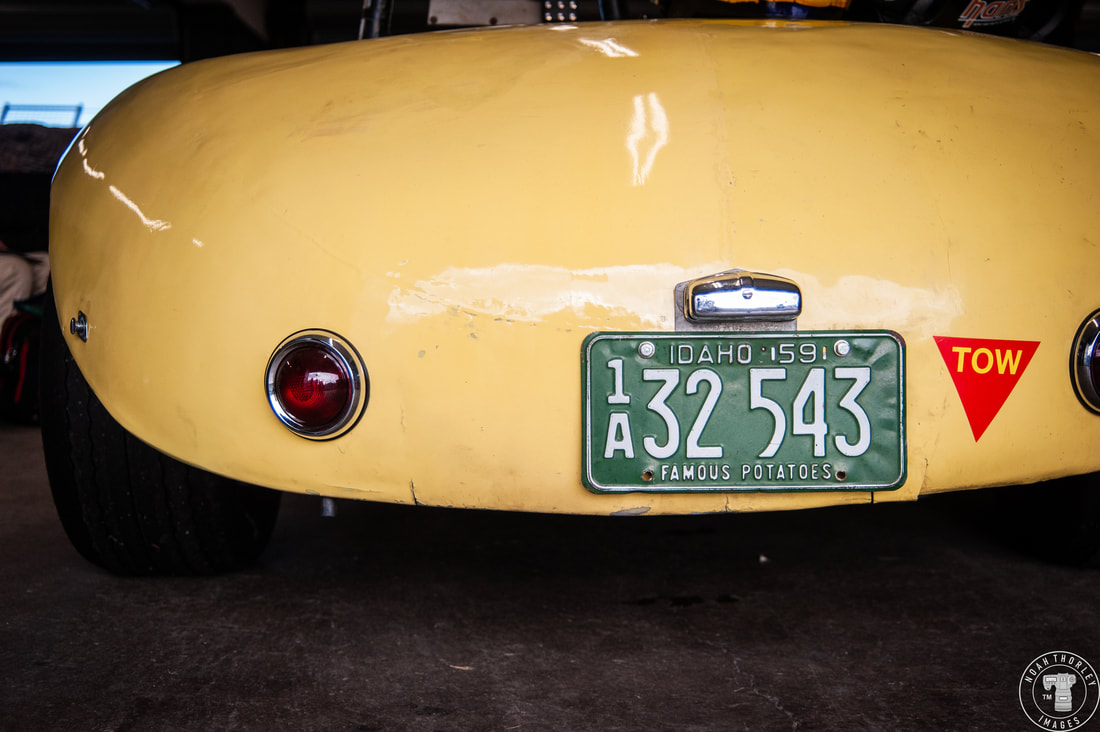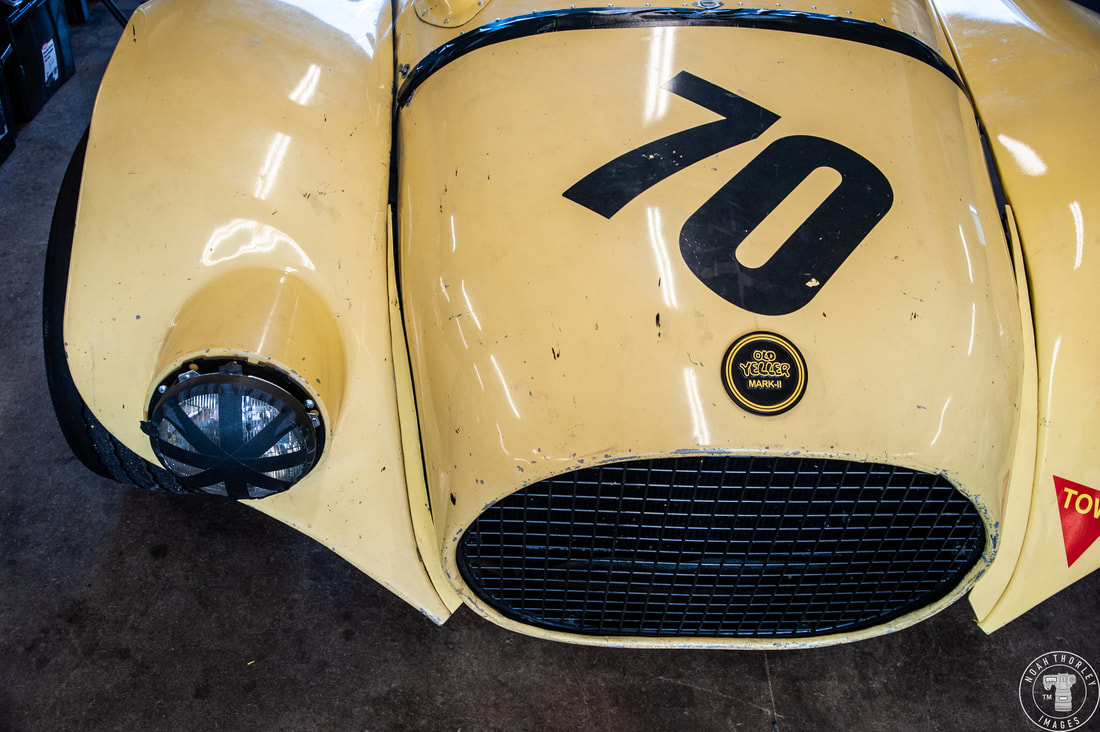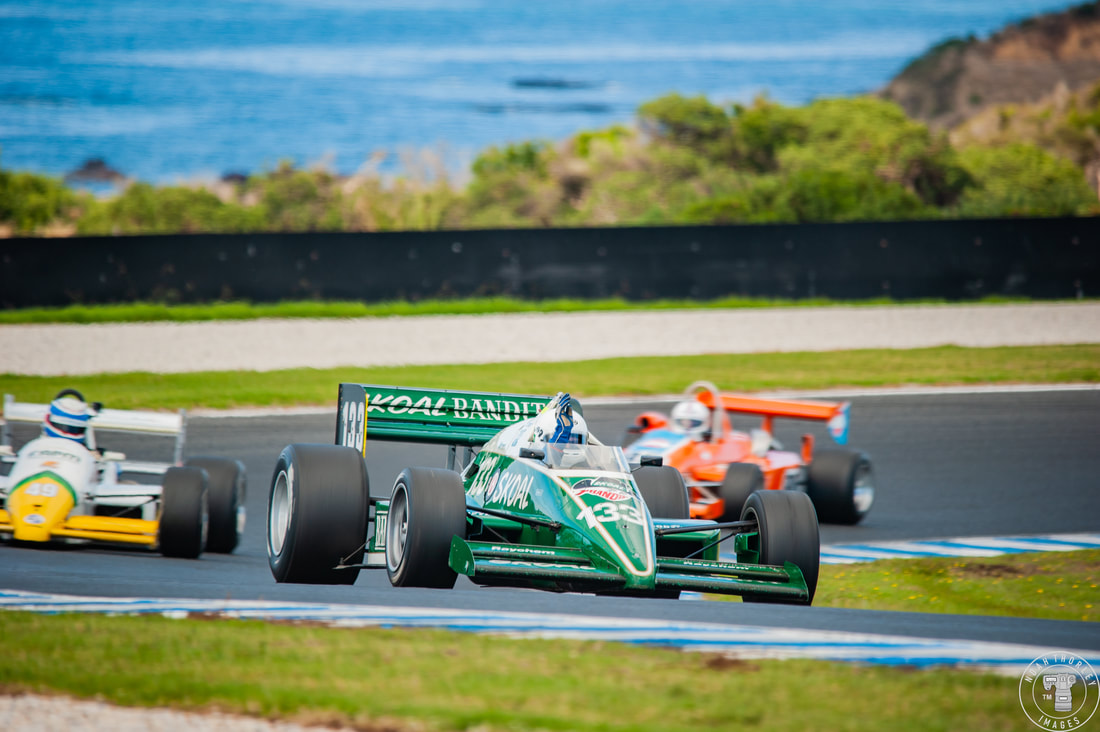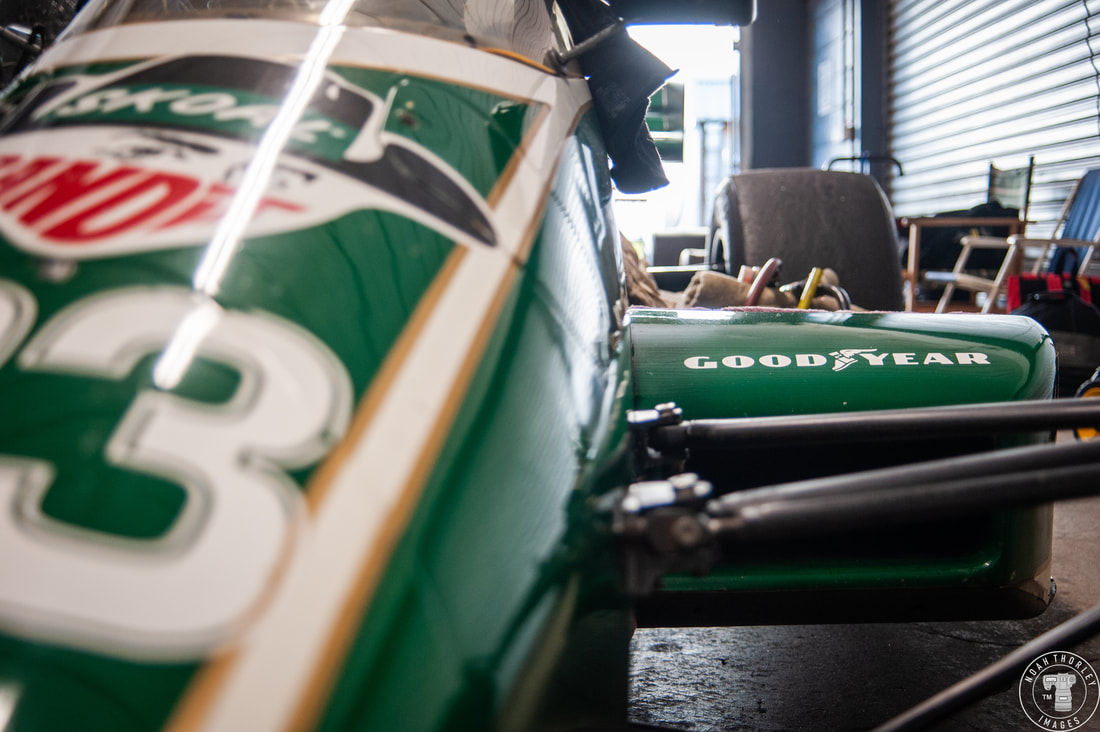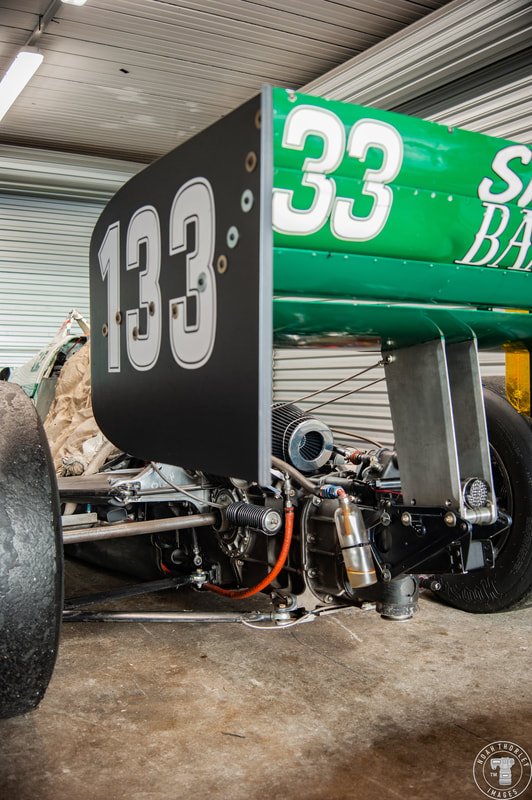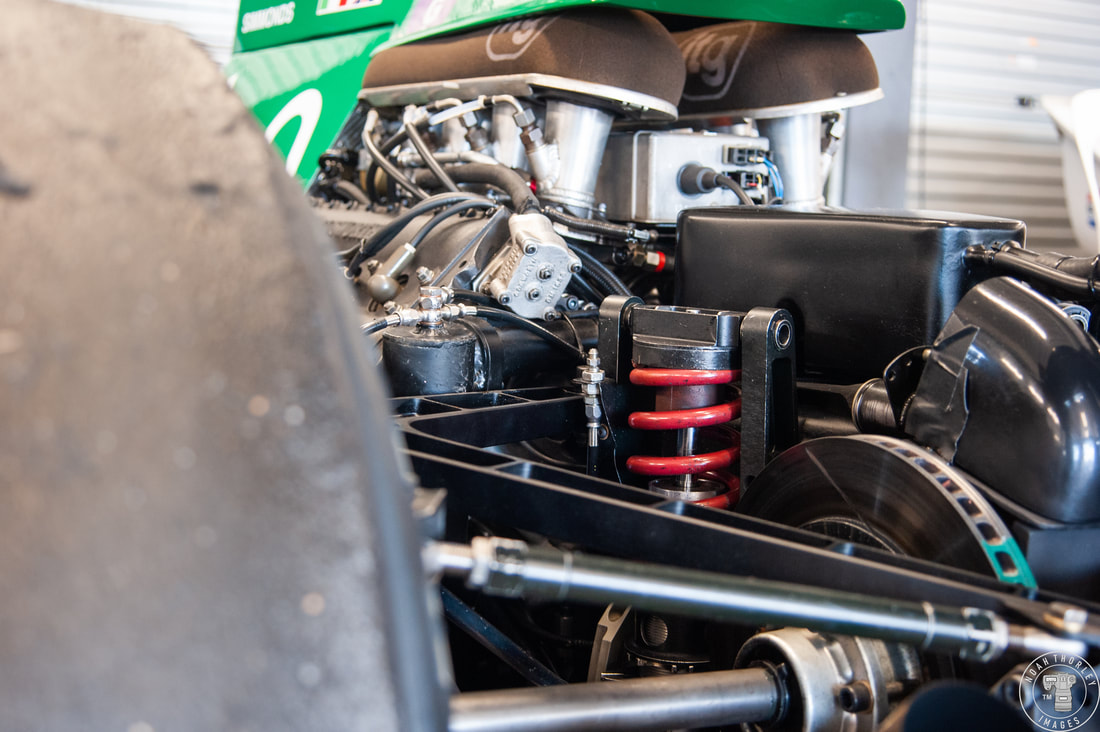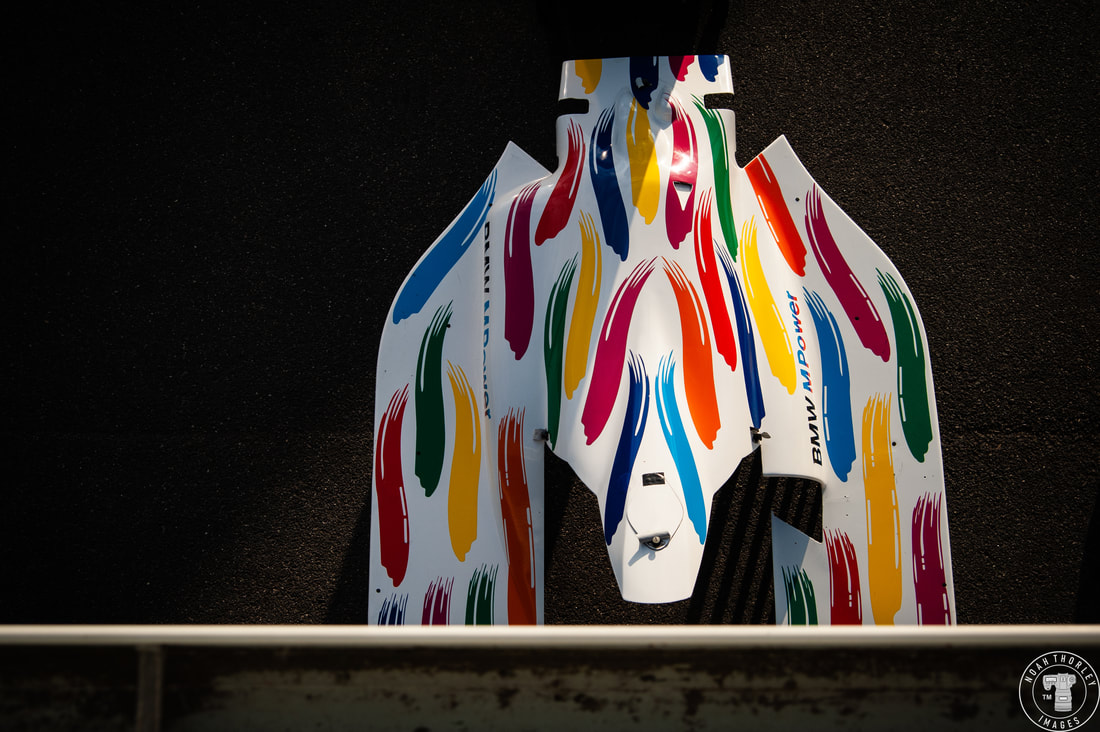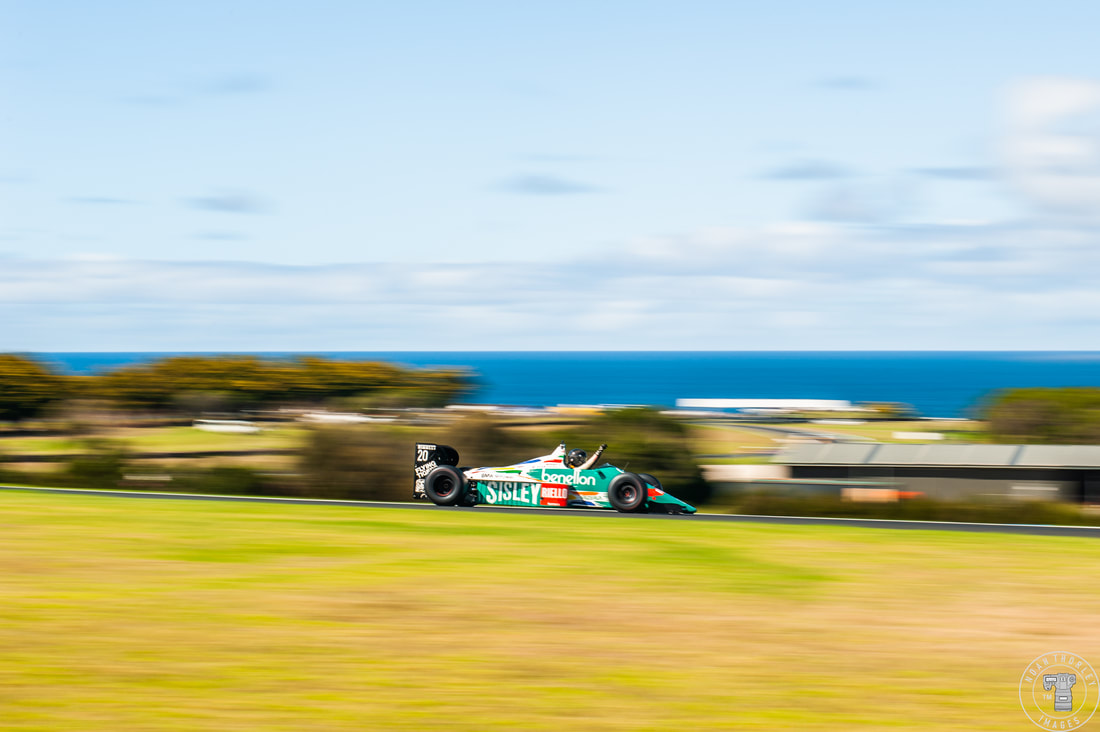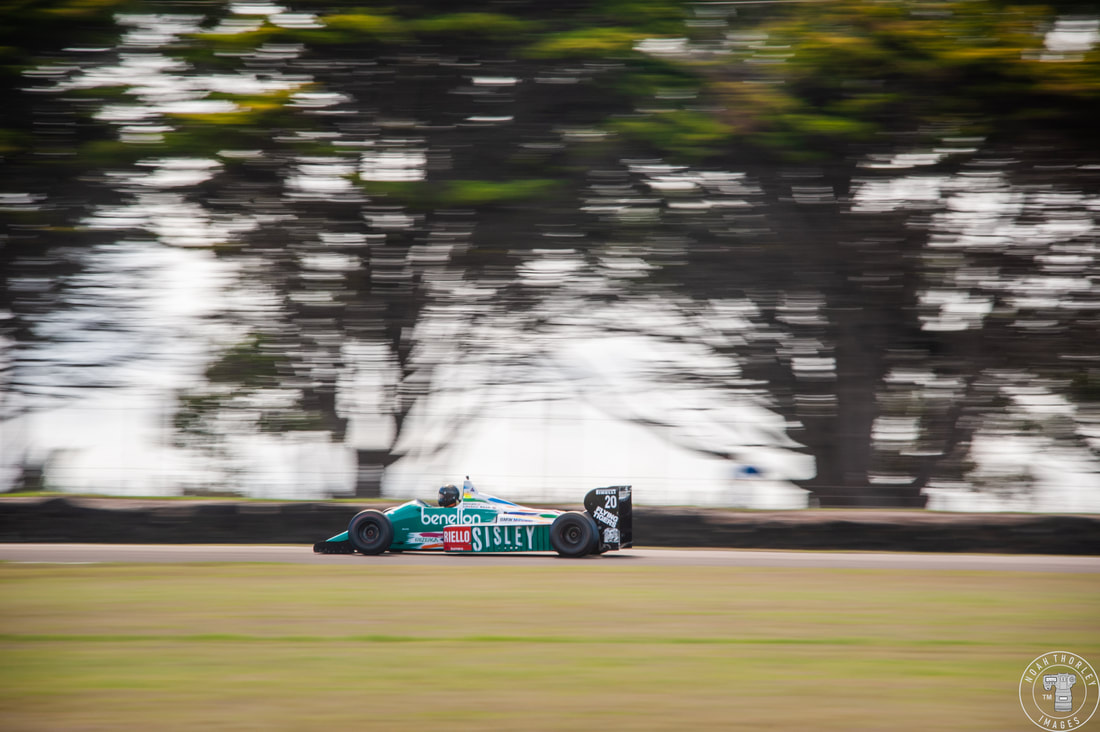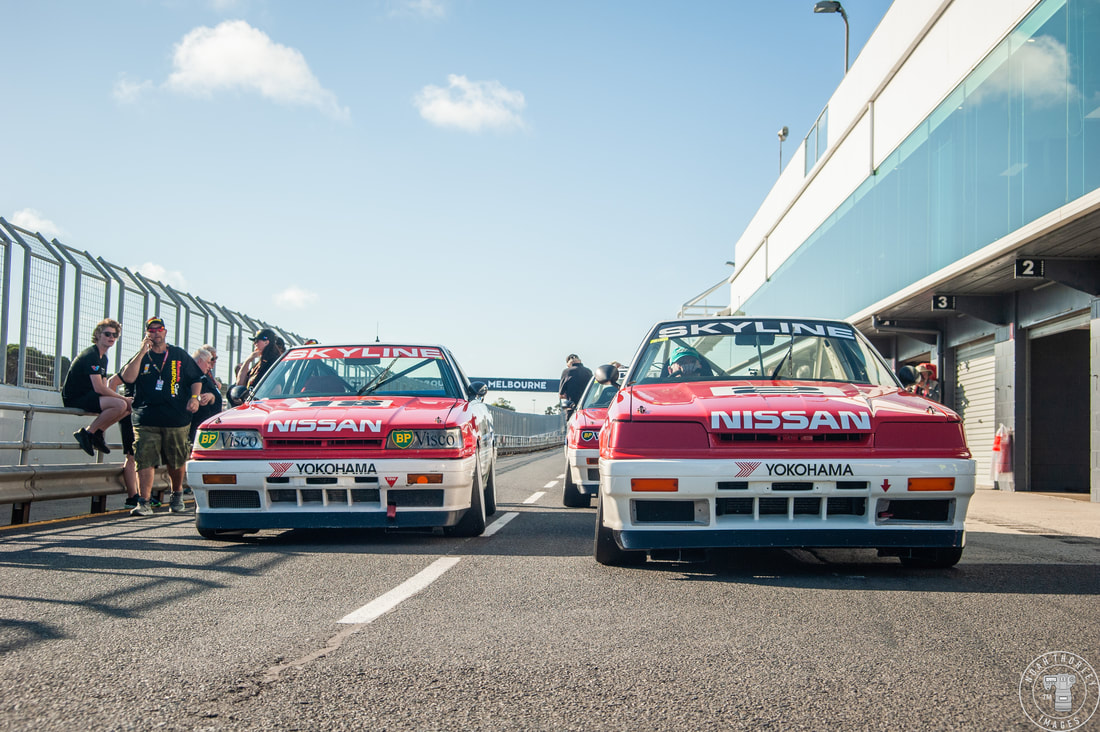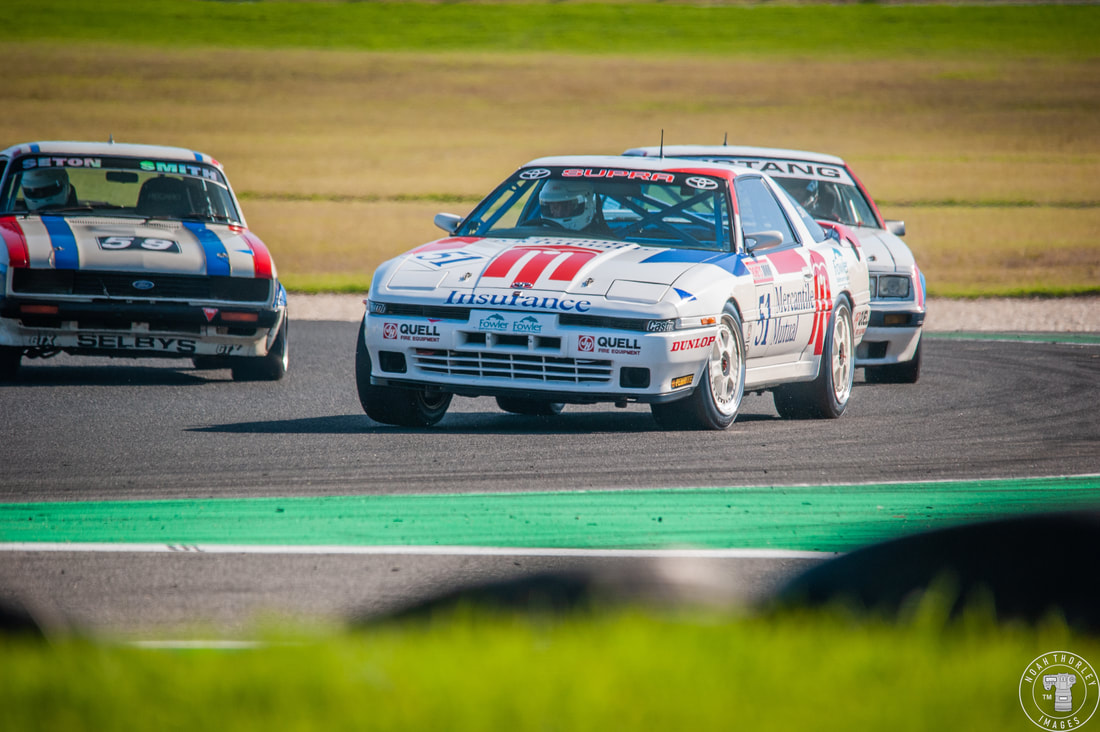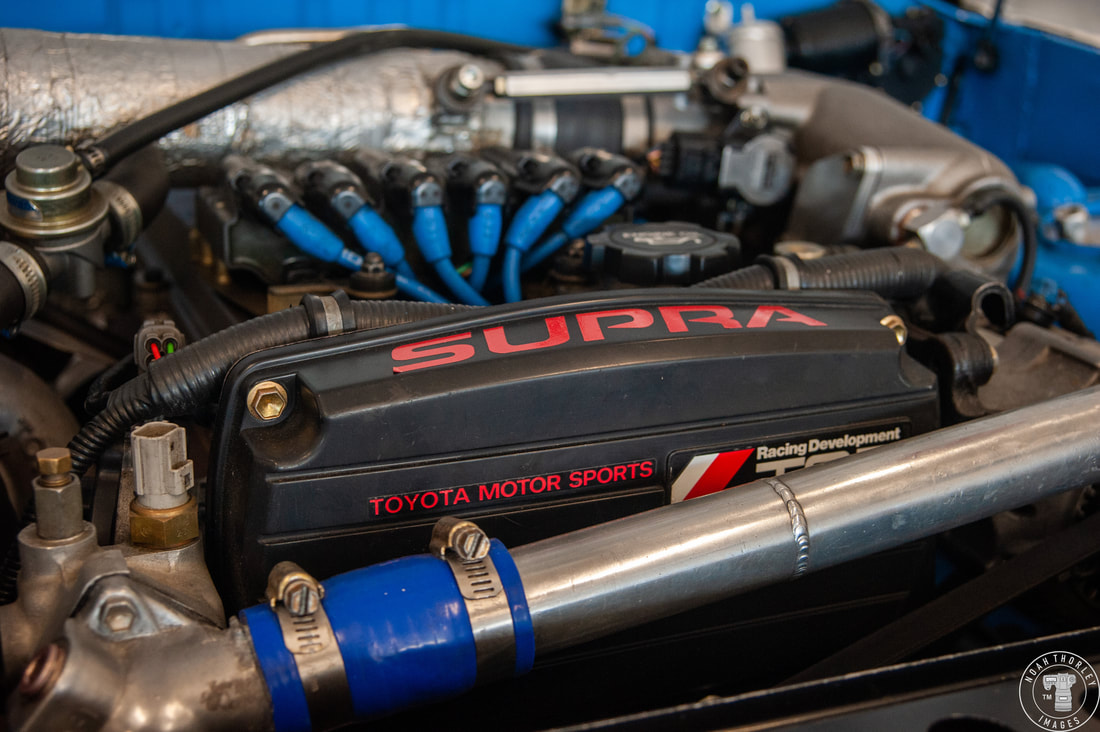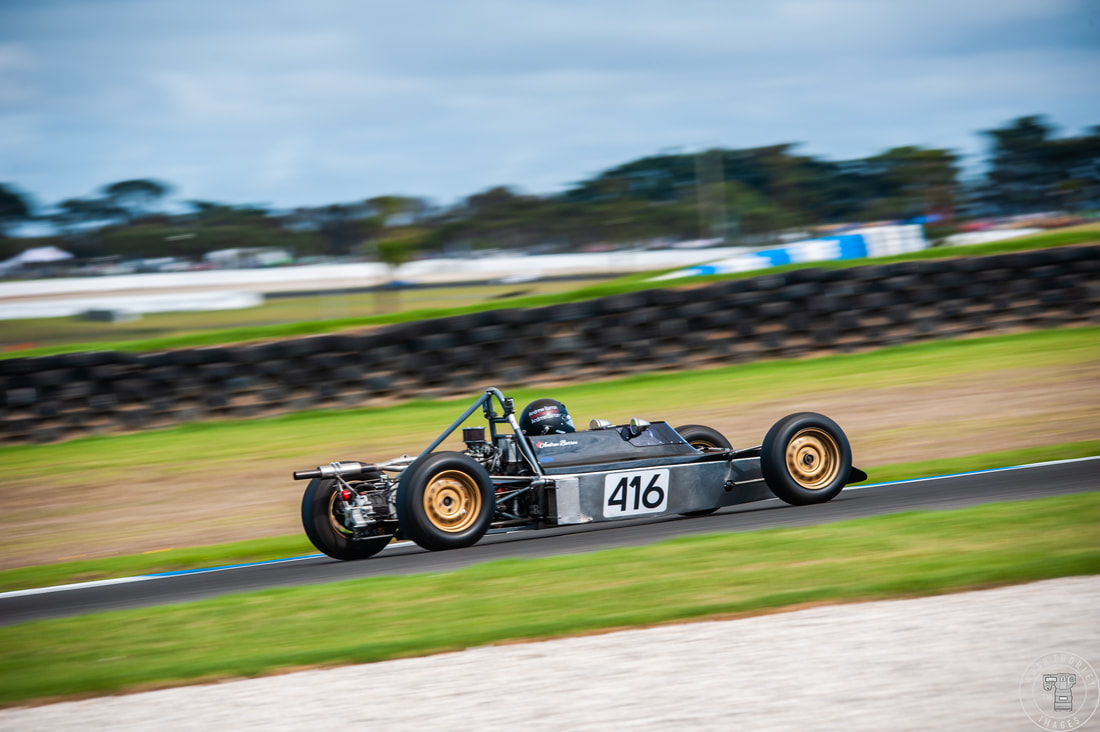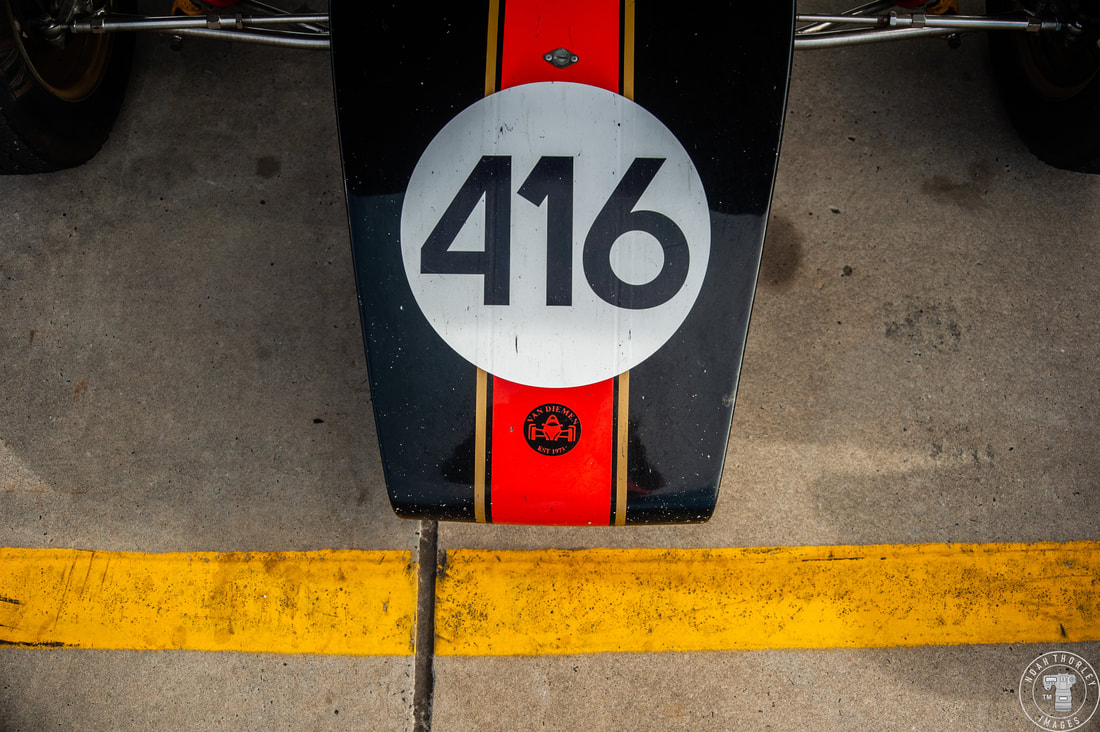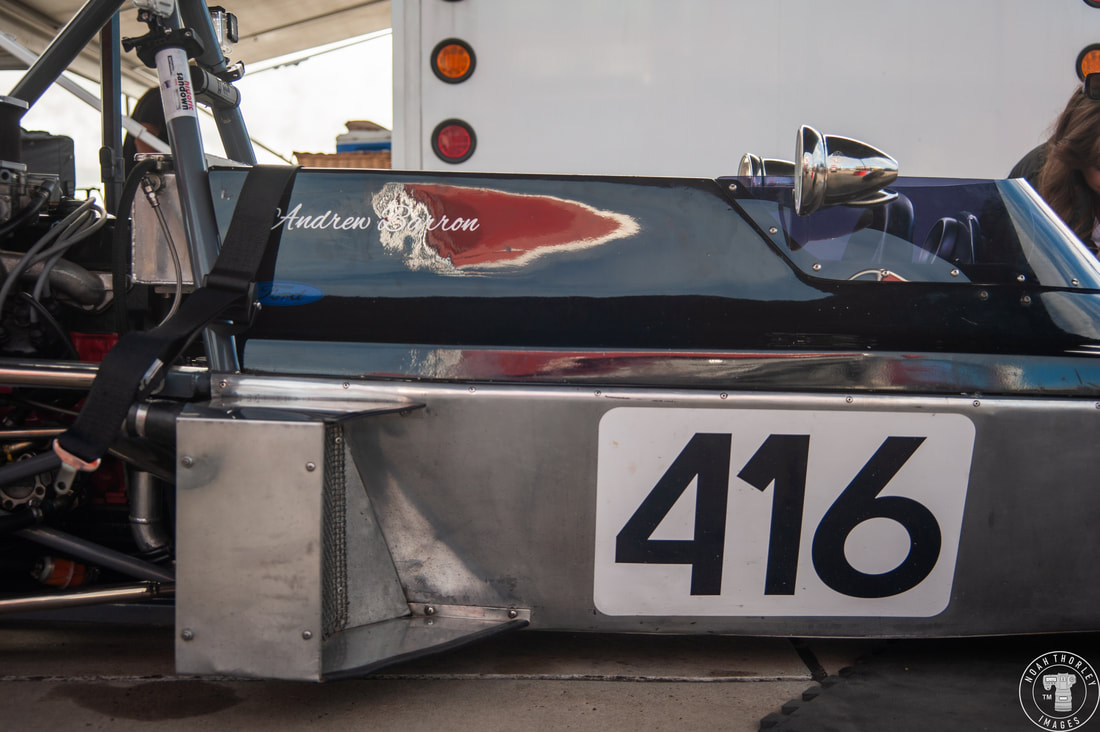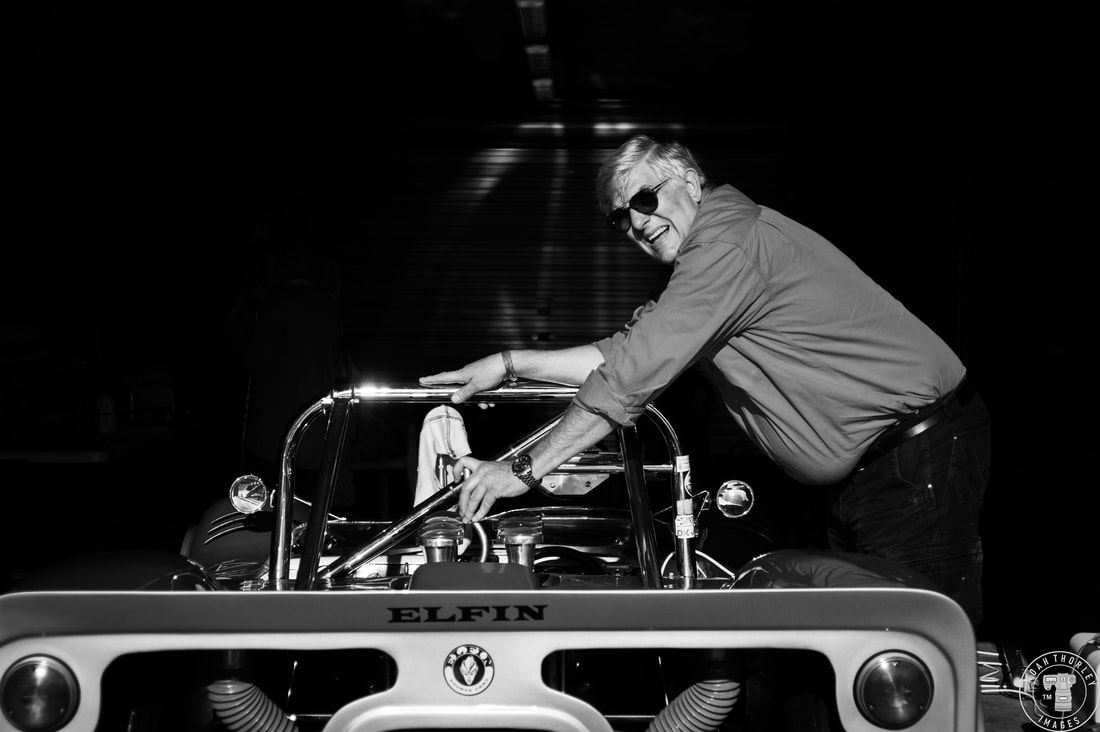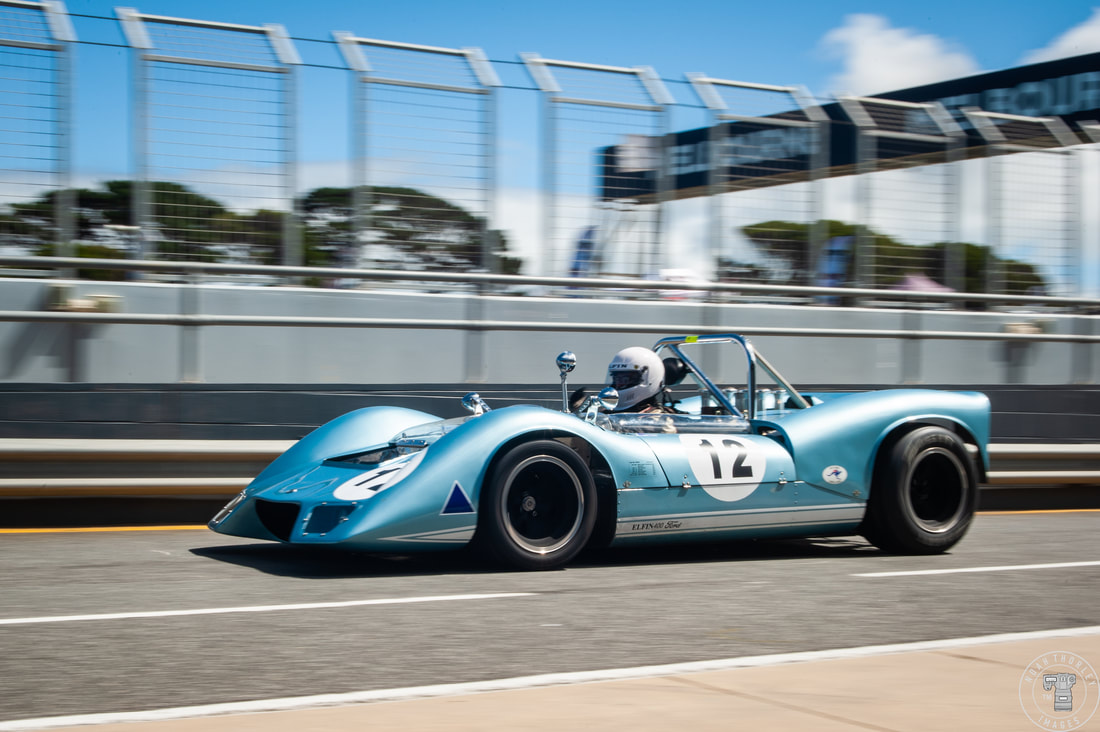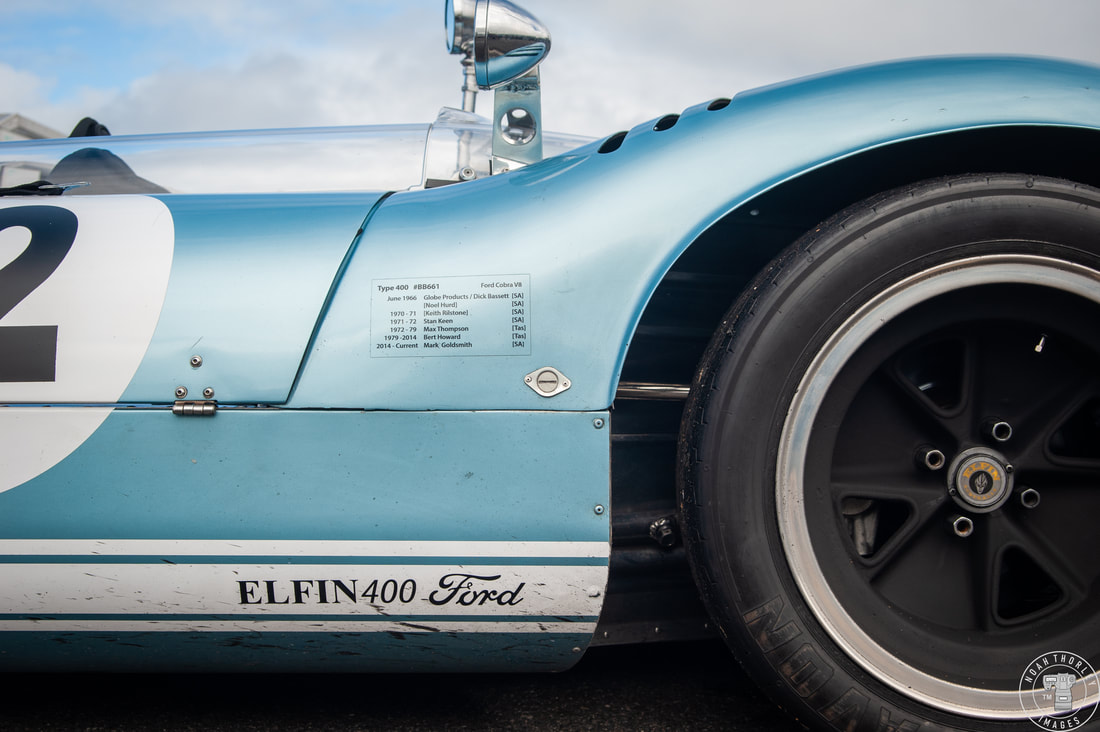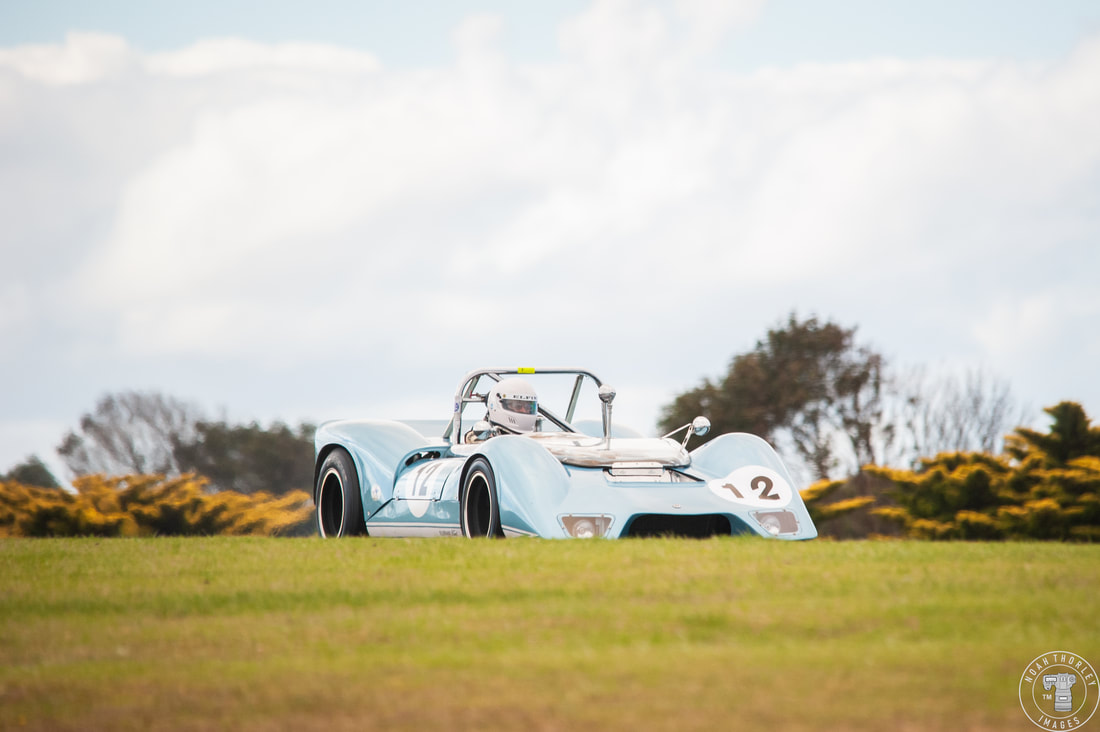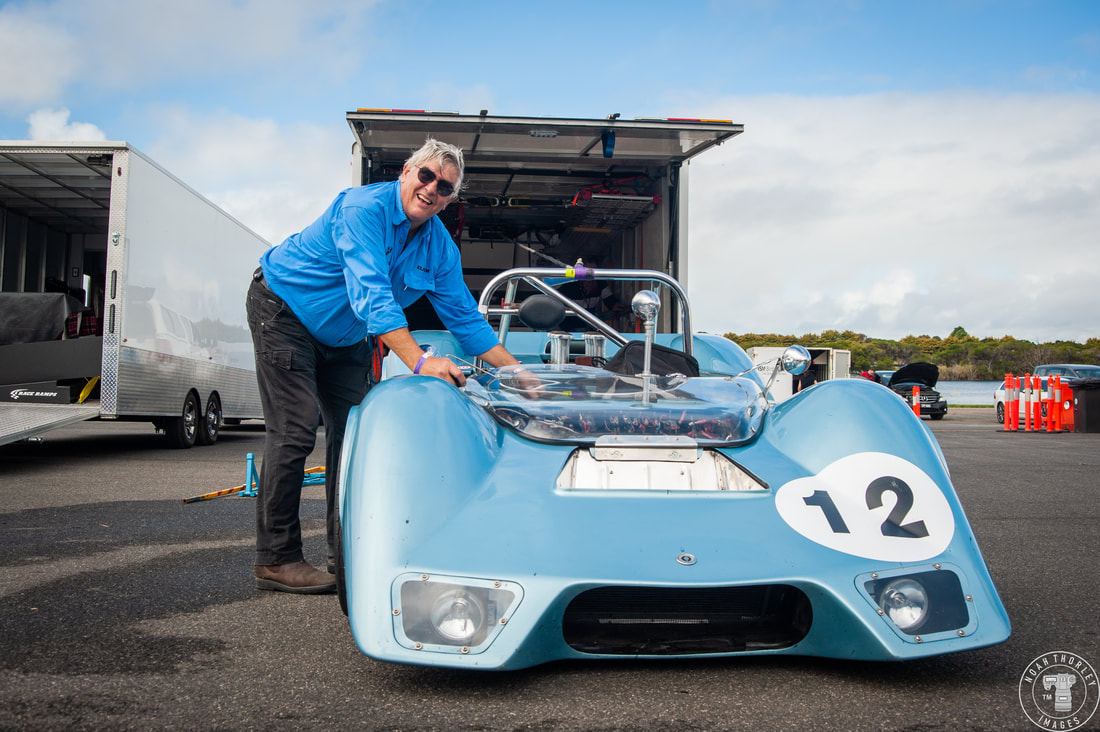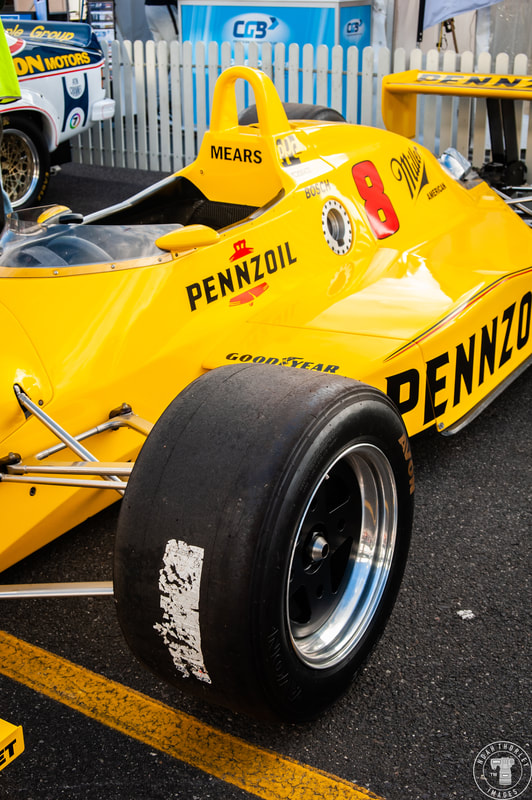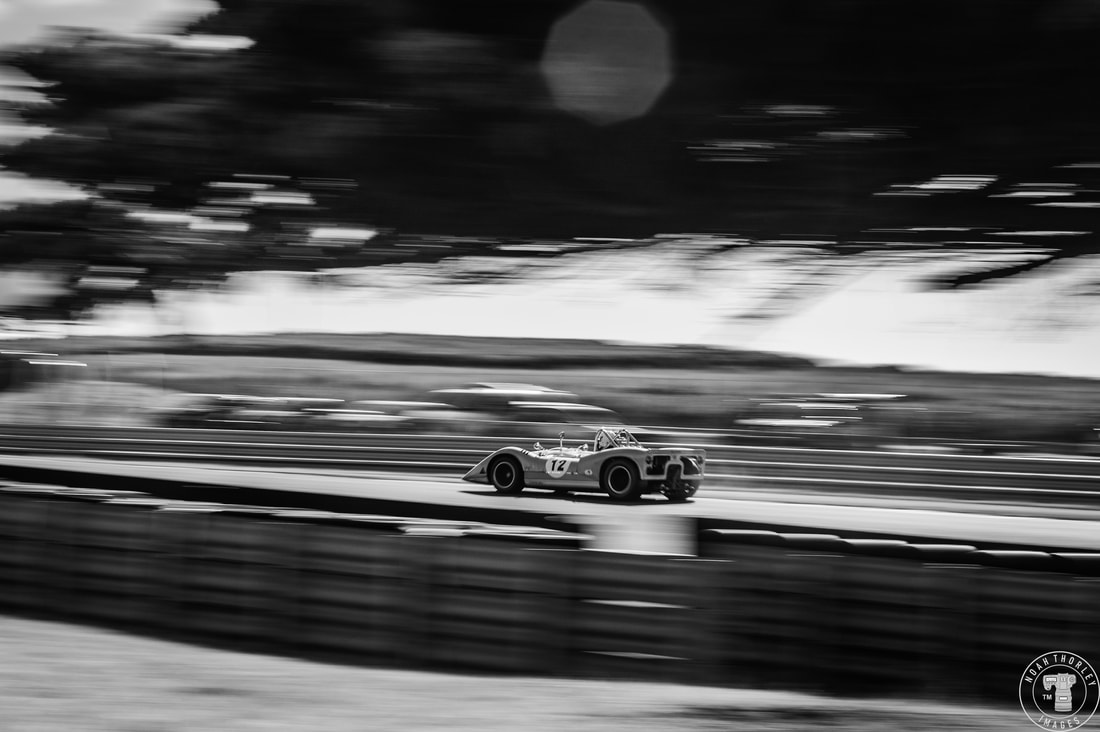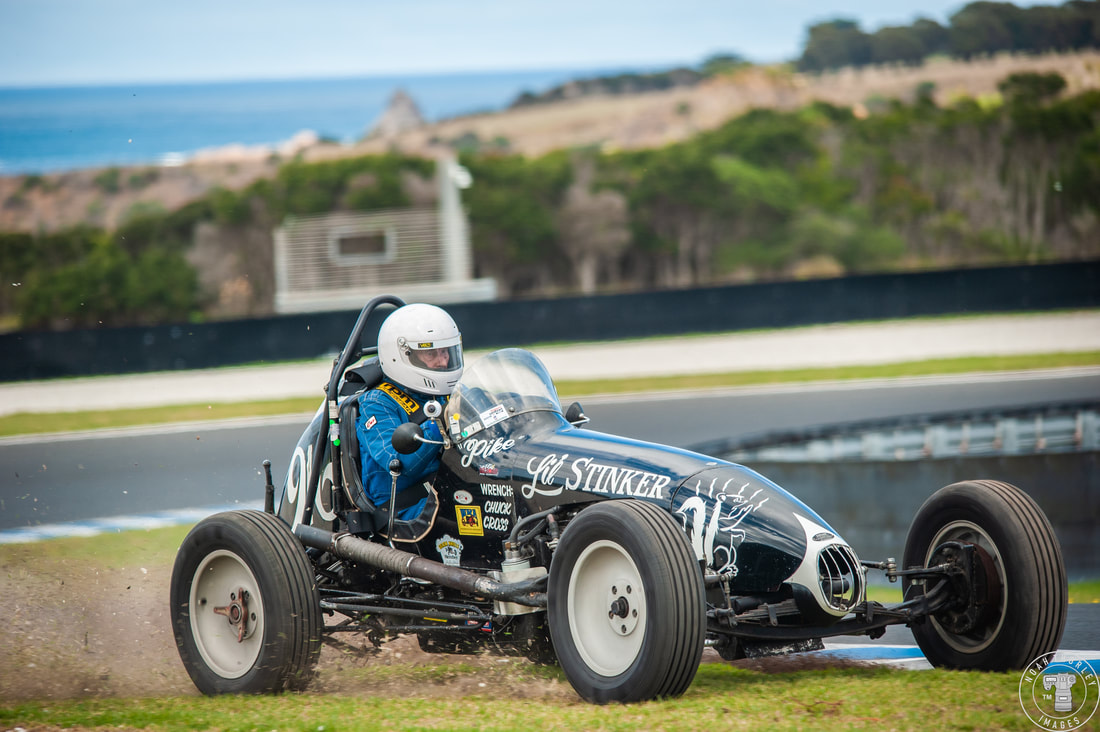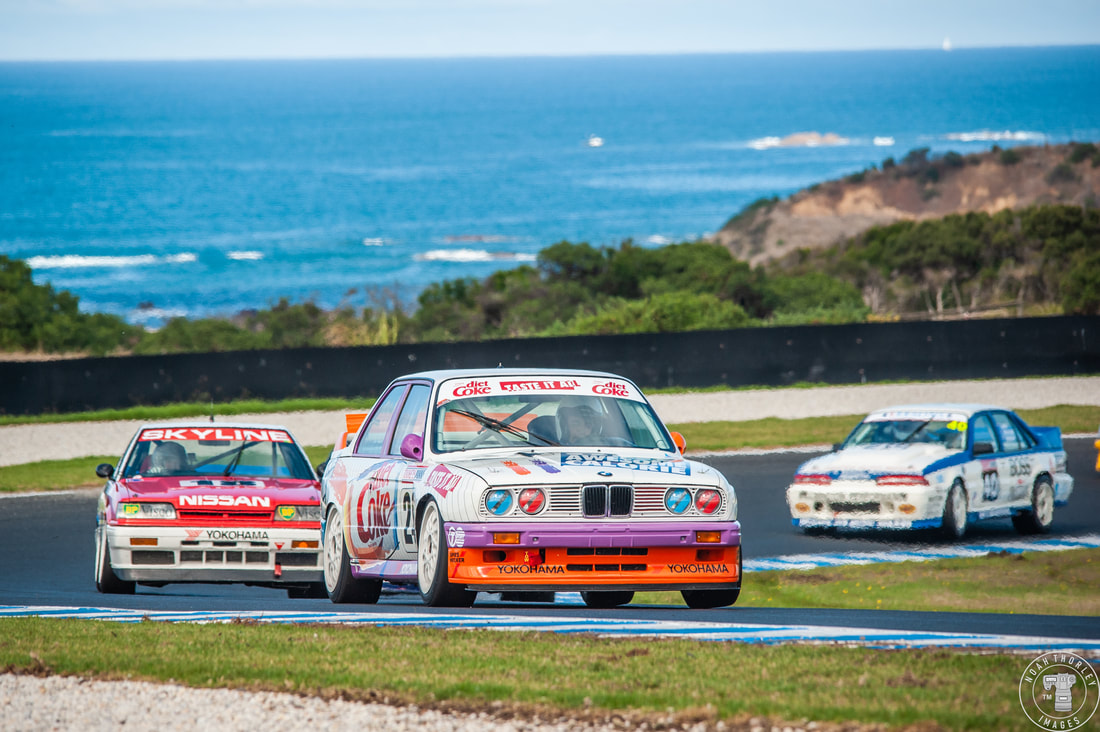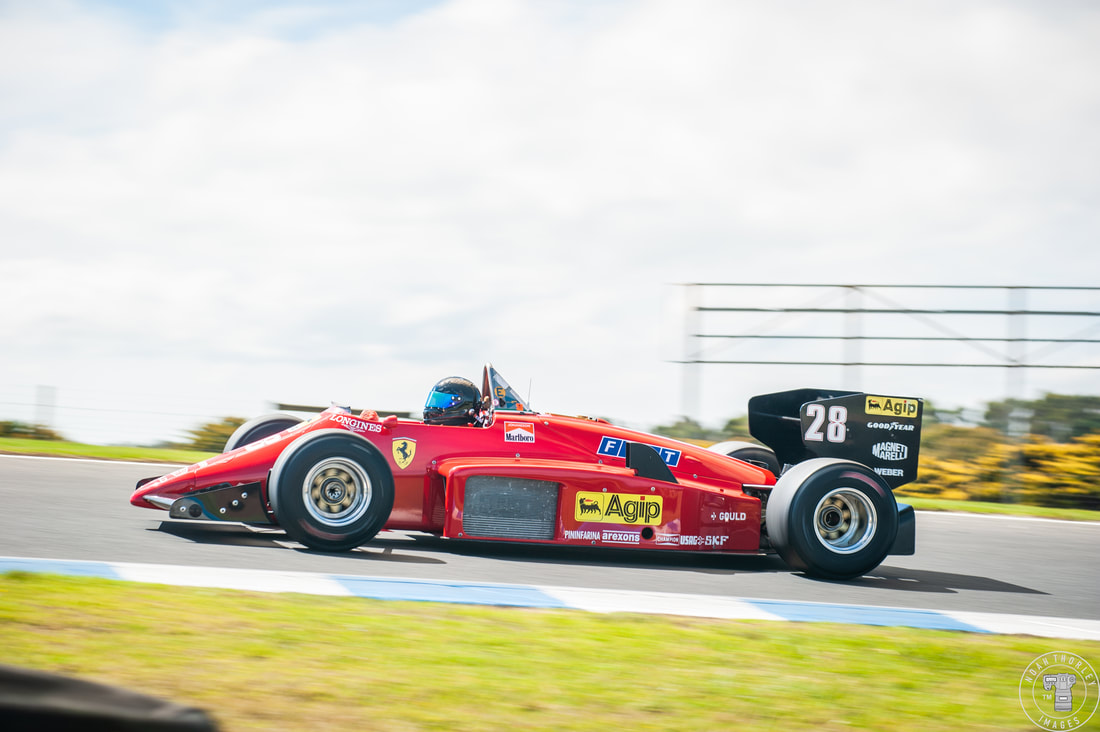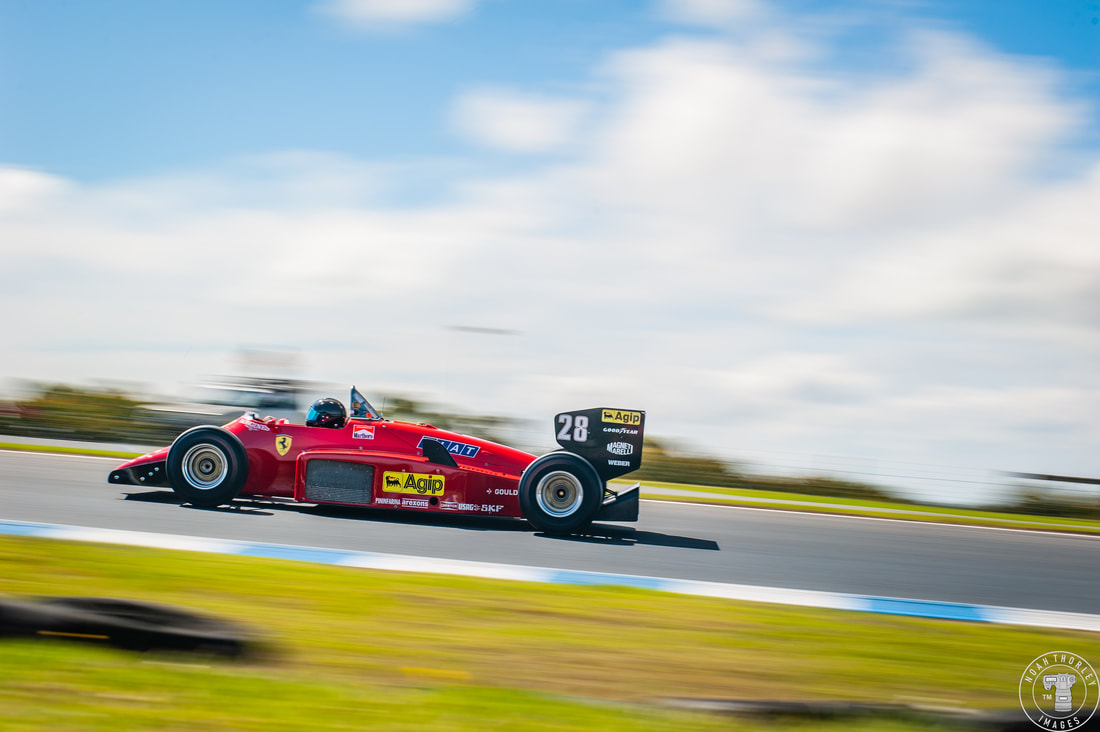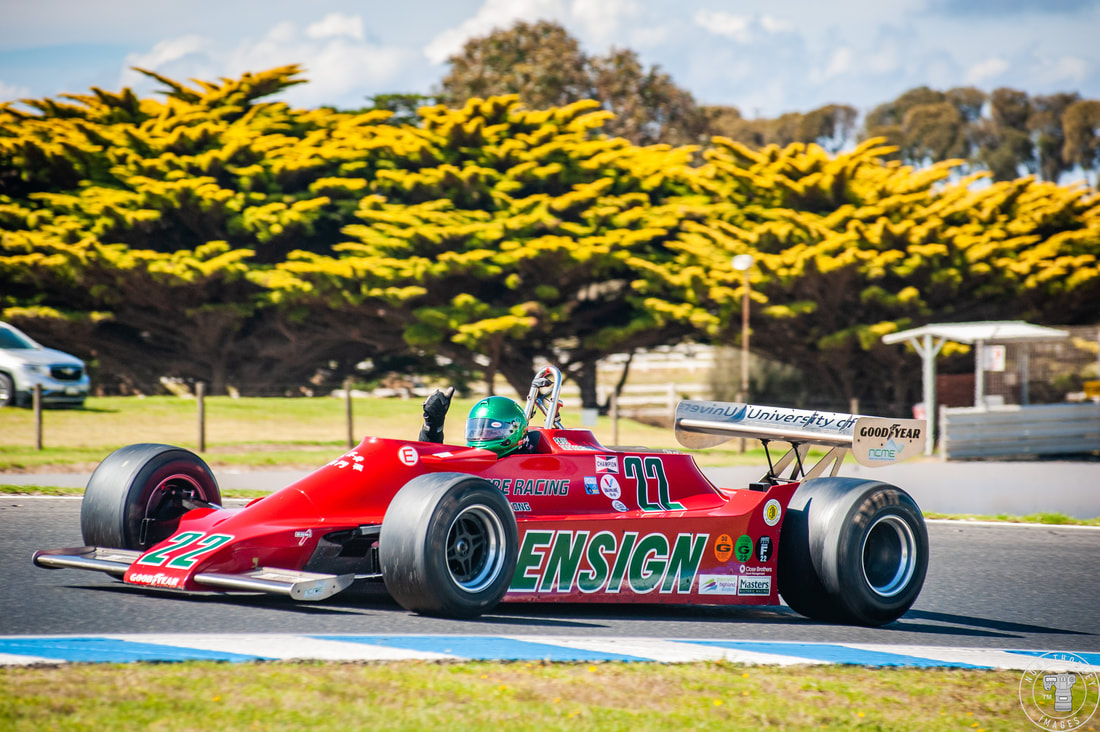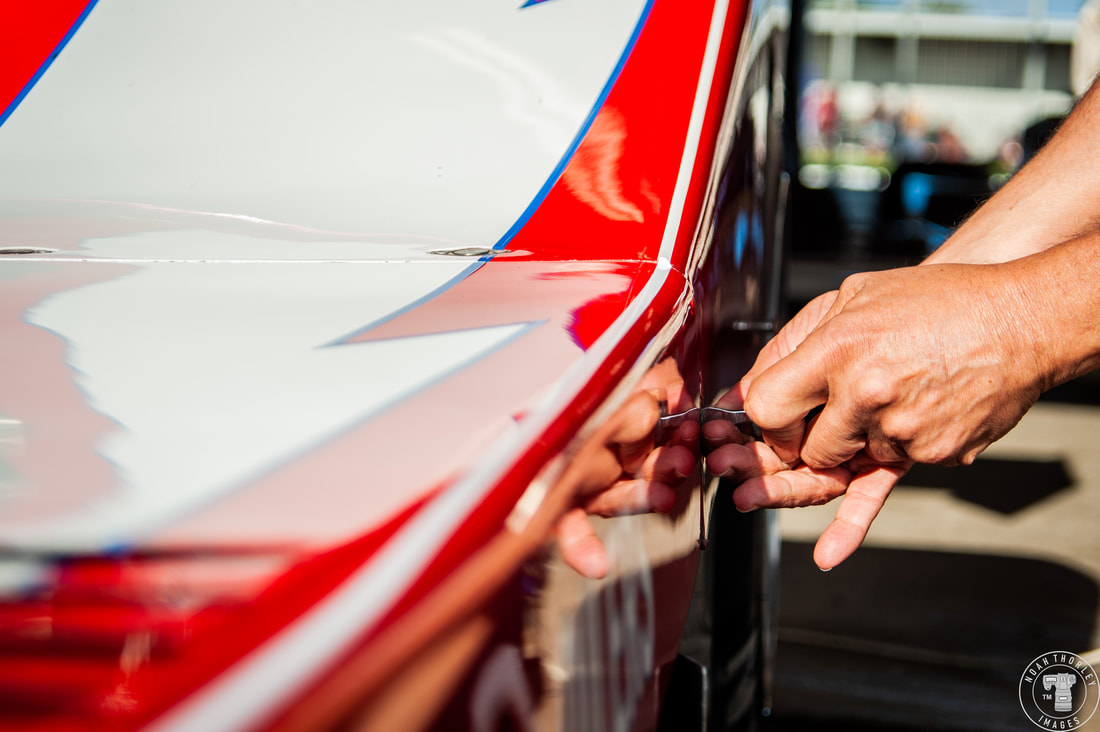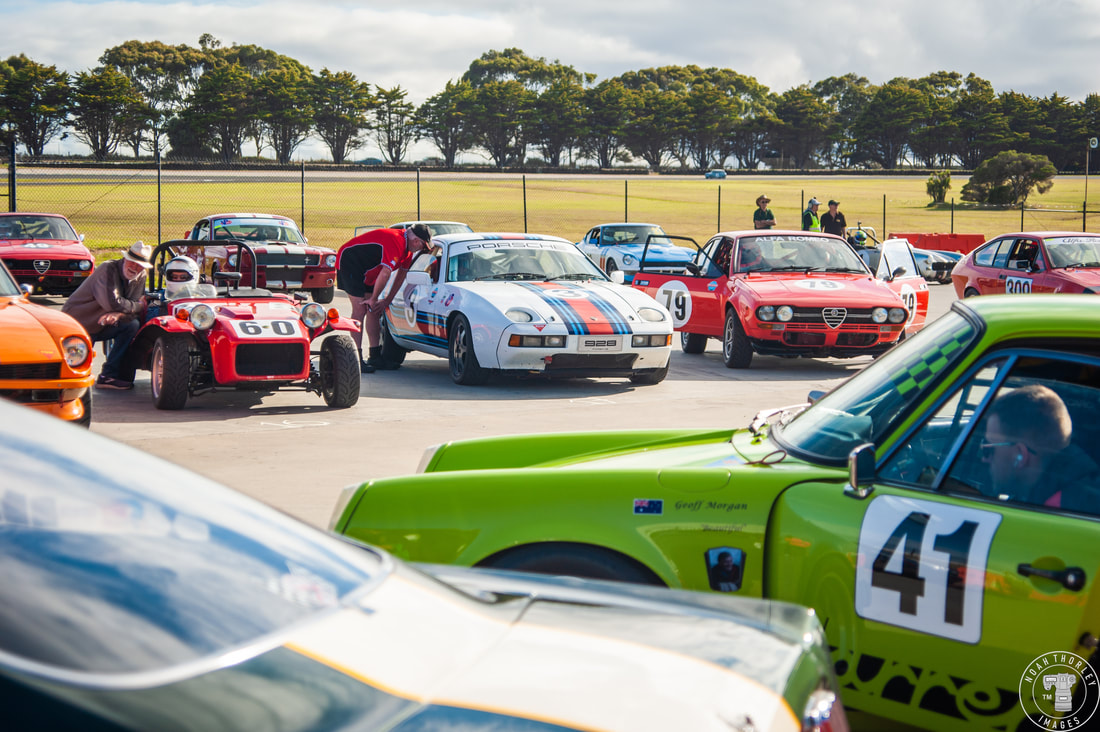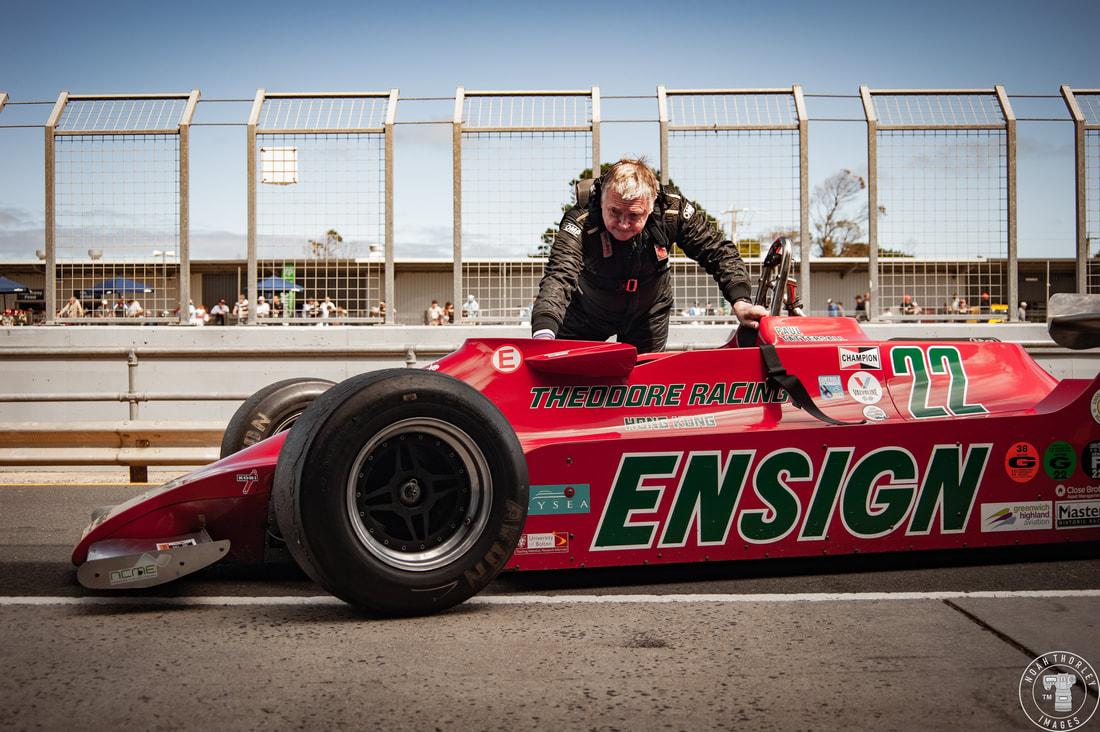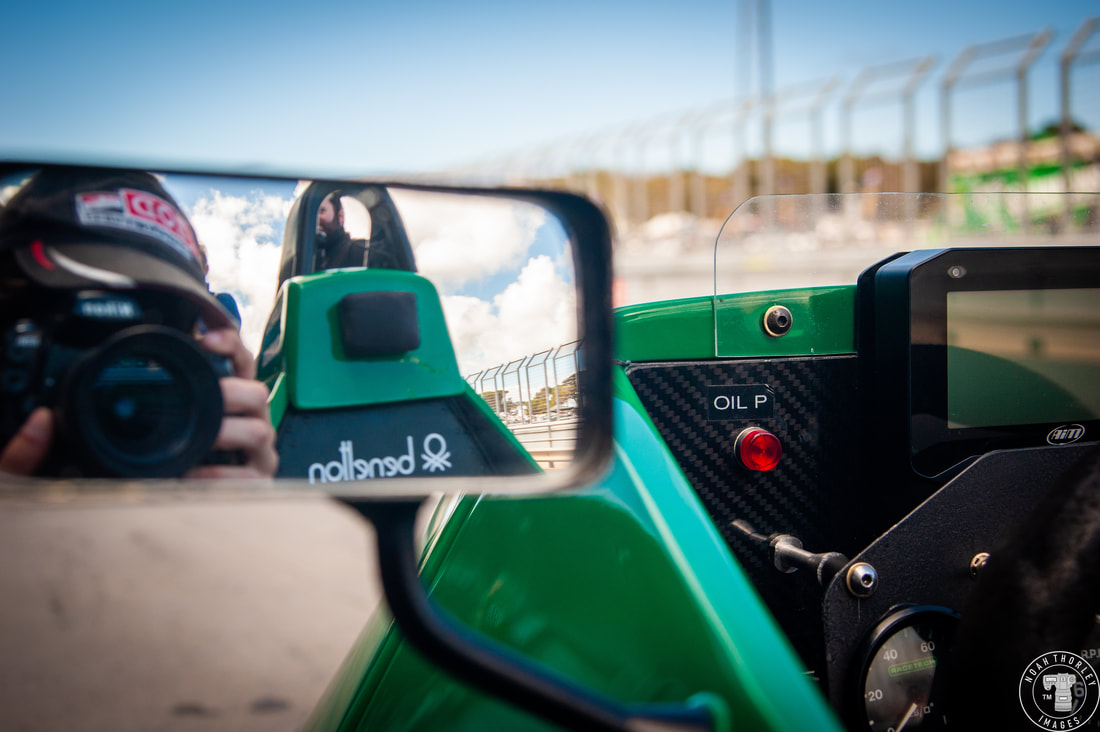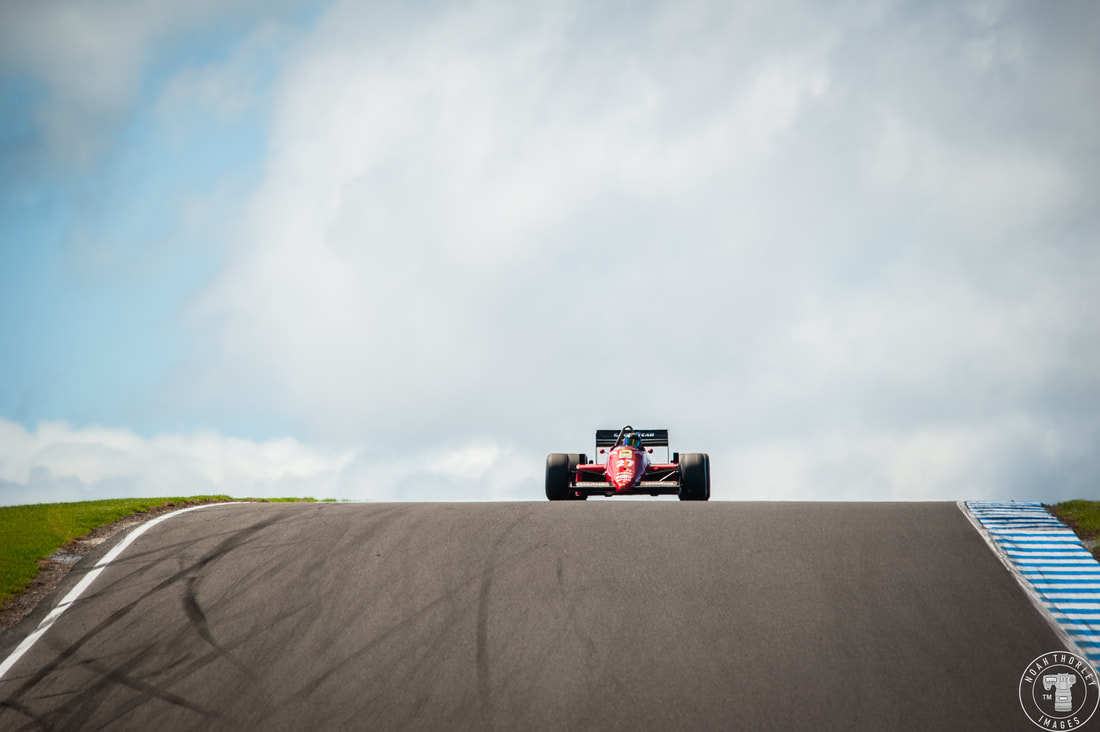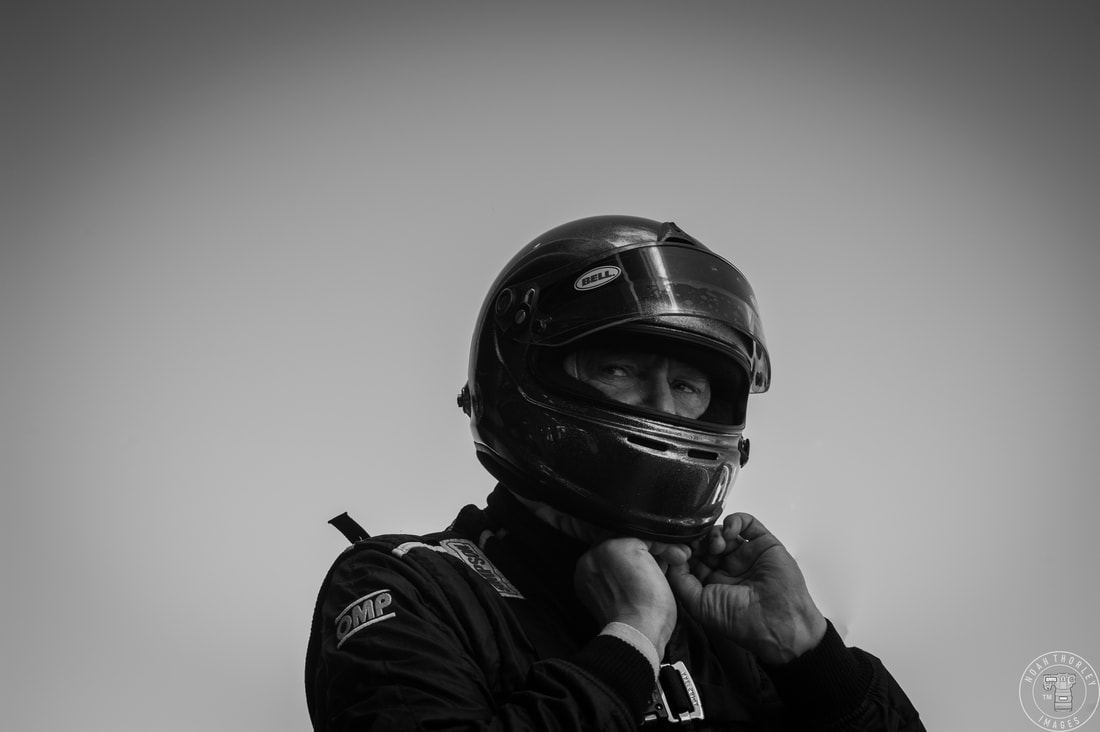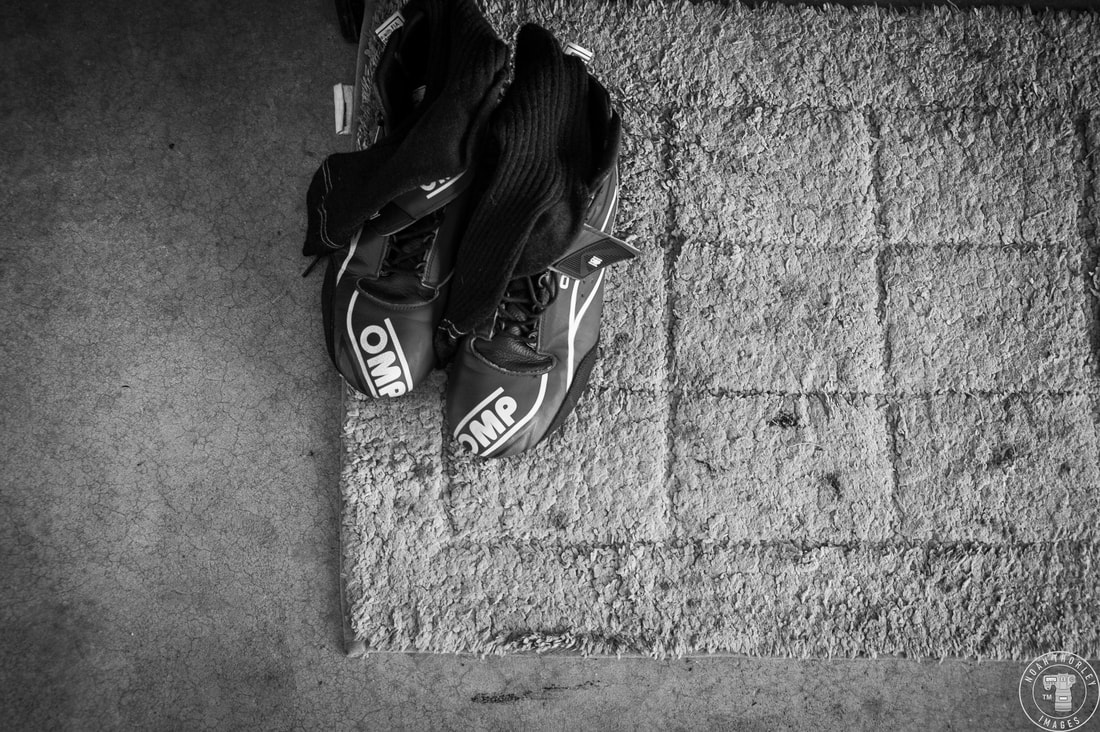|
Just like each historic motorsport weekend held by VHRR, some of the coolest classic racers in Australia and abroad come together to be pushed to their limits again in front of the eyes of many motorsport fanatics. For the 34th running of the Phillip Island Classic Festival of Motorsport, I wanted to pick a handful of cars to focus on, and I quickly learned that each car and their owners have a special story. My first spotlight is not one but technically three cars. Three Prosport LM3000's graced the Phillip Island circuit, and their paint scheme game was strong. Only 21 of these cars were ever made, and for a single make series in the UK and throughout Europe, however they also raced in other Group C races including the Daytona 24hour. These particular three were imported into Australia approximately four years ago. Swift Racing brought out the Gulf and Shell flavoured LM3000's as Graeme Hughes now owns the Castrol Prosport. As best we know, there's about 15 of them left worldwide... three here in Australia... two in South Africa, the rest have spread throughout England and Europe. These three probably get raced more often than anywhere else in the world." - Swift Racing Mechanic They are made up of a space frame chassis, meaning the engine, suspension and body panels are attached to a frame of tubing. 3-litre V6 Ford Cosworth engines gives plenty of horsepower whilst playing a beautiful symphony at full throttle, whilst the rocker arm suspension and flat underbelly keeps the car stable on the ground. However, the no.33 Castrol, is powered by a 3.5 litre Ferrari V8. In terms of information on what was called the BRSCC Prosport LM3000 championship, there is very little, however if this 28-year-old footage is anything to go by, it certainly would have been quite a spectacle. We can count ourselves lucky in Australia by having three that are a common sight at historic race meetings. Speaking of cars that had their own championships, the BMW M1 Procar. It's angles, beauty and special exhaust note is one of a kind, and a rare sight, but what particularly caught my eye was the Japanese sponsorships. The M1 Procar began as a one-make series so that it was eligible for Group 4 (later known as Group B) World championship racing. In addition to racing as a support category for Formula 1 and later at Le Mans, the M1 Procar would race all over. This particular M1 was built by Project 4 - Ron Dennis' business before McLaren - and was delivered brand new to Japan. The M1 was BMW's first car built solely under its M division. Boasting a powerful straight 6 engine, the M1 could go from 0-100km/hr in just 4.2 seconds, a proper supercar with the looks, sound, grunt and overall mid-engine chassis stability, along with its ties with F1 drivers competing in its Procar class, it is no doubt a legend. As it looks now is how this M1 was raced back in 1979 in Japan, winning the 1980 Japanese Endurance Championship. The car was then sold from the team sponsor Speed Star Wheels (now called Speed Star Racing, which are the famous SSR Wheels) on to Auto Beaurex Motor Sports, which gave the car victory in its class at the 1981 Fuji 1000km and the overall win at the 1982 Suzuka 1000. Chris Bowden then purchased the car from Auto Beaurex in 2013 and returned it to its 1979 shining silver warpaint. So how is it like to drive? After being interrupted by the angry C2 Corvette in the next garage bay over, and the Group S cars flying down the main straight, Chris Bowden could tell me. Beautiful! It's an endurance racer... it's very stable, beautiful weight distribution... It's not scary to drive as such, just very well behaved, reasonably fast. It'll never beat a turbo Porsche in a drag race but certainly under brakes mid corner it'll smoke it. I absolutely love it, it's probably the coolest thing I've ever raced. Inside the cabin it sounds crazy, it's just a fricken' cool car, just stoked to have it down in Australia and let everyone hear it and see it." -Chris Bowden Chris and the team also raced the car at Laguna Seca in 2016 (where it was spotted by StanceWorks) for the worldwide celebration of 100 years of BMW and it was the fastest BMW badged car at the event. It is one thing to be in the presence of one of these, but to be in the presence of chassis #1077, with its ties not only to Ron Dennis and Project 4, but also its connections with the Japanese Speed Star Racing is truly special. Rarely are you able to witness with all of your senses big juxtaposing motorsport names coming together in success in the form of a single car. Speaking of cars connected to famous names in motorsport, here we have the Old Yeller MKII Buick Special. Max and Ina Balchowsky were behind the well-known hot rod and motor transplant shop of Hollywood Motors. They raced a few highly modified cars in sports car races in the 1950's including a Buick powered '32 Ford and a Dolcetti Special from England, again with a Buick motor. With their acclaimed skills, known as the master of engine transplants at the time, Max got the opportunity to take over the operations of the famous Morgenson Special, which after a crash, they rebuilt and modified with another Buick motor. This became known as the Old Yeller MK1. The second version of Old Yeller would come about in the fall of 1959, built from the ground up with a lightweight tube chassis. As usual at Hollywood Motors, Max and Ina integrating a Buick V8 and some of best parts at the time, often taken from junkyards, which is why the Old Yeller is also known as the 'Backyard Special'. Setting the engine way back, and putting the driver right near the rear end, gave it impressive weight distribution for the time. With drivers like Bob Bondurant, Billy Krause, Bobby Drake, Paul O'Shea, Max Balchowsky himself and most notably Dan Gurney and Carroll Shelby, Old Yeller II would beat factory teams of the likes of Ferrari, Jaguar and Maserati, breaking track records in the process. It blew away the competition, with only mechanical issues being its downfall. Carroll Shelby led by 51 seconds over the competition at the Road America International Grand Prix, before suffering transmission problems. Despite this it would have certainly proved to Carroll Shelby the brilliant recipe of a lightweight chassis and a big American motor. So [Carroll Shelby] calls up AC. 'Send me a chassis, body no motor, I've got the motor'... and that became the Cobra" -Ernest Nagamatsu This 'Home Built Backyard Special' would find itself in a backyard before being found and restored in the mid 1970's by David Gibb in Santa Barbara, California. Ernest Nagamatsu purchased the car from David Gibb and completed the job in restoring Old Yeller back to its racing configuration, and now he races it all around the world, from Road America to the Goodwood Festival of Speed, and all the way here in Australia. It's a handful, because it's got a massive amount of torque and horsepower from 6400cc, and the problem is you hit the throttle, the torque just pulls you out like a freight train, so you have to be very cautious." -Ernest Nagamatsu Ernest has a website dedicated to the complete history of the Old Yeller MKII, so I highly suggest you have a read. Both he, Max Balchowsky and Old Yeller are beyond cool! Staying with the theme of American race cars, next up we have this 1986 March 86C Indycar. This is chassis no. 11 and was used during practice for that year's Indianapolis 500 by Tom Sneva, racing for Mike Curb of Curb Racing. However, Sneva would qualify with chassis no. 31 that was powered by the faster Buick engine at the time. Sneva would spin out on the formation lap and would use the chassis you see here for the rest of the season finishing on the podium at Phoenix and Milwaukee. In 1987, the car would be driven by Ed Pimm in the 1987 Indy 500, qualifying with a four-lap average of 203.284mph, but retired on lap 109 of the race. Notably, John Andretti would drive this car in at least one known race at the end of the season, assisting him in receiving rookie of the year honours. After its time at Curb Racing, it was owned privately twice, first in Pennsylvania then in Los Angeles where it was raced in the Historic Series West, before Ian Buddery purchased the car in 2013. Because the cut off for historic racing at the time was 1986, Ian had to revert the livery back to Tom Sneva spec, rather than having John Andretti's name on the side. In 2016, Ian sent the March 86C's Ford Cosworth engine to Indianapolis to be refurbished by Team Penske's chief engine builder, and has since refurbished the engines rings and bearings himself. It sensational! It's incredibly fast in a straight line, I do the same time down the straight as Guido does in the Ferrari [156/85], but Indycars are not as nimble as F1 cars, they have a longer wheelbase, so they don't dive in[to] the corners." -Ian Buddery Ian Buddery also has an entry into the Indianapolis Historics for June next year, since the car is eligible, as it did compete in the Indianapolis 500. I've driven at Indy, this is my second Indycar, I've had Indycar's for fourteen years, and the holy grail is driving around the speedway. It's a very special place, very emotional"-Ian Buddery From an Indycar to now Formula 1 cars, this is the Tyrrell 012, the Formula 1 team's first car to be mostly composed from carbon fibre and used during the 1983-1985 seasons. The Tyrrell team chose a short-stroke version of Ford's DPV Cosworth engine that they had gotten from the Lotus F1 Team. Despite the car being very nimble lightweight, it was unable to match the high horsepower turbocharged competition. From 1983 to 84, Tyrrell experimented with different aerodynamics including a triangle like rear wing, larger sidepods and a larger more conventional looking rear wing (like the one you see here) to increase downforce. In 1984, Tyrrell would go from the DPV engine to the DPY V8 engine provided by Ford themselves which had a water injection system to lowere cylinder temperature. Both drivers Martin Brundle and Stefan Belloff would impress in their rookie season, both scoring a podium each and scoring multiple points finishes. Unfortunately, it would all come crashing down as the team was disqualified as they were caught filling up their water tank late during the Detroit Grand Prix, with not only water but shots of lead to make sure the car was above weight. Tyrrell would be excluded from the 1984 championship standings and the Tyrrell 012 would only compete in a handful of races in 1985 before being replaced with the turbocharged Tyrrell 014. The fashion brand Benetton would sponsor the Tyrrell team in 1983, before purchasing the Toleman team in 1986. They would start their constructers endevours in Formula One with the very colourful Benetton B186. Not only did it feature a fantastic looking livery, but it was also very quick. Its BMW M12/13 inline four turbocharged engines made sure it was one of the fastest down the straights in the field, pushing out up to 1400bhp, with Gerhard Berger setting the fastest speed at Monza that year of 352km/hr. Berger would also score a podium at San Marino along with points finishes for the first three races. However, the car was uncompetitive on tight tracks like Monaco, whilst also being unreliable. Gerhard Berger and teammate Teo Fabi were on for a 1-2 finish in Belgium, until Fabi overrevved his engine, causing it to fail laps later and Berger's battery died. However, Benetton would win their first race in Mexico later in the year with Gerhard Berger on the top step of the podium. This Benetton has been in Australia for quite a while, it's current owner has had it for eight years now before being owned privately in New South Wales. Unfortunately, this B186 would suffer boost issues all weekend, with the car being surrounded with work all Saturday. It's normally an absolute animal [to drive]... but this weekend we didn't have boost, so we sorta just made-up time in the corners and did what we could to catch up to everyone." Next up we have another homebuilt custom racecar, this blue beauty is known as the Toron Special. In 1962, Kerry Luckins would begin building this special racer in his home garage with the help of his brother Garnet and Ross Stewart, a specialist in supercharging. Built on a space frame chassis, the Toron would be powered by a supercharged Hillman 1500 engine, which would be paired to the gearbox from a 1953 Type 1 Volkswagen. The car was finished a year later and began competing in local Victorian Hillclimb and circuit races until 1968. However, the Toron Special would spend most of its life as a planter pot for a lemon tree. In 2007, Soren Luckins, Garnet's son decided to restore the garden ornament to its original racing pedigree. With help from Greg Smith, many but not all (including the supercharger unless I'm very much mistaken) was saved, and ten years later, it returned to the racetrack at the 2017 Sandown Historics. Made up of a fiberglass front clip, alluminium tail section and including inboard rear brakes and independent suspension, it was one modern racecar back in 1963, and certainly one special piece of family history now. The three Nissan Skyline GTS-R's were probably the most popular cars at this year's Phillip Island Classic, but there was another Japanese Group A car I wanted to chase down. The Toyota Team Australia MK3 Supra, built by the Japanese specialists at TOMS had its return to action at Phillip Island that weekend. This 1989 Toyota Supra was shipped over to Australia for use in that years Bathurst 1000 and the 1990 Australian Touring Car Championship and was driven predominately by John Smith. With teammate Drew Price, the car finished fifth in the 1990 Sandown 500, but would retire on lap 112 of that years Bathurst 1000 with engine problems. Toyota Australia would pull the plug on the program at the end of 1990, but Smith purchased and would drive the car in the 1991 Bathurst 1000 pairing with Geoff Morgan and the 'Mercantile Mutual' sponsorship you see on the side here. Toyota Australia campaigned two of these Supra's in Australia, the other one unfortunately met its end at the crusher as it was not allowed to be sold or sent back to Japan. John Smith had owned the car for pretty much its whole life until Meon Nehrybecki wanted to buy it, and after a year of negotiations, he now has the keys. This is the Supra's first event in ten years and was incredible to witness among so many other now classic Group A contenders. It's got plenty of mumbo. It delivers [480hp] nicely, it's got plenty of torque. Brakes well, steers well, does everything a racecar should, I'm just getting used to it. [John Smith] qualified at a 1:46 in 1990, and the best I've had is a 1:52, so there's about 7 or 8 seconds there I've got to find." -Meon Nehrybecki At every race meeting, Formula Fords always seem to crop up. They are not only one of the most popular forms of racing in Australia, but the world over in some form or another, and Andrew Barron's Van Dieman is quite an interesting open-wheeler at that. Most Van Dieman's are labelled as an RF chassis, however Andrew's is an early FA73. The FA referring to Ralf Firman and Ross Ambrose who began building these Van Dieman cars. Unfortunately, that partnership fell apart the next year, which is why Van Diemans built after 1973 are referred to as an RF chassis' (just Ralf Firman). This Van Dieman is chassis no. 8, so possibly the earliest Van Dieman running in Australia today but was first imported to New Zealand in 1973. Like all historic Formula Fords at the Classic, it's powered by a Kent 1600cc crossflow engine from an Escort Cortina Penrite imported the car into Australia in 2005 and was owned by a couple of different owners before Andrew Barron purchased the car 5 years ago. One detail you may notice that's unique to this Formula Ford is it's primitive and lack thereof for aero and body panels. The early owners made many modifications to the fiberglass to reduce weight, removing the common duckbill like nose and sidepods over the radiator, as even back in 1973, they found it was too heavy. Andrew also has a custom helmet bag and drink bottle that matches his machine, and was a 40th birthday present from his fiancé. I doubt the historic F1 Ferrari mechanics had anything quite like that! This being such an early model, it is also lower to the ground, and Andrew practically lies down inches from the ground as he dives approximately into the 1min and 53sec lap times around Phillip Island. It's the first racecar I've ever owned, so I don't know any different, and it's absolutely amazing! Now that I've done this for a few years I think I can relax and go quickly, and when you do that, you go slow. It's amazing how much it forces you to focus and think about nothing else." -Andrew Barron Last but certainly not least we have Mark Goldsmith, his Elfin 400 and quite a special story. This 400 is chassis no. 1 of four ever built, with each chassis having a different engine including one with a Chevy V8 and one with the first Repco Brabham engine to be sold to anyone other than Jack Brabham. However, chassis no. 1 would first be powered by a Ford 298 before being upgraded to a 302 Windsor. Globe Products were perfecting a quad cam V8... and they wanted this [Elfin 400] as the mule car for it. Sadly, they built one engine, but cams were outlawed then on non-production engines. That knocked out this car and the third car, which went to Bob Jane and had a Repco Brabham engine in it." -Mark Goldsmith The Elfin 400 greeting your screen now has had multiple owners including, Stan Keen who raced it in South Australia, Max Thompson who successfully campaigned the car in Tasmania and Bert Howard. As the car had two big shunts in Tasmania, it was sent back to the factory to not only be restored, but also given a more modern wedge shape look for Bert Howard. According to Mark, "it looked ugly!" Mark would acquire the car in 2014 and would begin a five-year process of a stripping the Elfin 400 right down to the bare chassis, sandblasting it and returning everything back to 1966 specifications. I think I logged it at 3000 hours, of which 300 were [to] outside contractors. We manufactured stuff from old photos... and I've got photos as the chassis is being built, so I was able to go back... what was there before? Ah yeah a bar went there, a bar went there, round the back of the bell housing, no worries we can do that" -Mark Goldsmith My favourite part of Mark Goldsmith's story with this car however starts right back. Elfin 400 chassis no.1 would compete in its first race at Mallala, and who would be in attendance? None other than a 14-year-old Mark Goldsmith and who would've thought, 55 years later, he would own it! And you can tell he absolutely loves and obsesses over this car. [Driving the Elfin 400], it's like wrestling a gorilla, it's a short chassis, a lotta horsepower, over 400, so one false move and it slides. But that's how it was in '66!" -Mark Goldsmith So, I've shared 10 on-track spotlights from the Phillip Island Classic with you. But I'm not done yet. There was one yellow submarine that didn't take to the track, that I can't help but mention. This beauty is a 1987 Penske PC16, driven by racing legend Rick 'The Rocket' Mears, and is currently up for sale (so if anyone has a spare $245,000 lying around, let me know). The PC16 sadly had teething issues not only at the start of the 1987 season, but was off the pace in the rest of its tenure. Come the biggest race of the year, the Indianapolis 500, not only the car you see here, but each PC16 failed to get up to speed, so after the first week of practice, Team Penske decided to switch to their stable of 1986 March IndyCar's (you've already seen one in this article). This car would be soon forgotten among the bizarre nature of the 1987 month of May in preparation for the 500. A total of 21 incident occurred leading up to the race, with reasons being as it hadn't rained for a full month, leading to the track being slick with oil and rubber, whilst others pointed to the new Goodyear radial tyres. Rick Mears' teammate Danny Ongais would be one of those to suffer an incident, one that would knock him unconscious, and out of the 500. His replacement, three-time champion and at the time three-time Indy 500 winner Al Unser would famously drive what was originally a display car sitting in a hotel lobby to victory that year, claiming his 4th and final Indy 500 crown. Although the PC16 was abandoned mid-season, Rick Mears did post some successful results in what is chassis no. 4, including a 3rd at Portland and two top ten finishes at Cleveland and Toronto. This car was also the base for the following PC17, one of Team Penske's most successful IndyCar's, so it wasn't all doom and gloom. This car was owned by Pennzoil before being purchased by Penrite and brought over to Australia. It was used as a display car, along with a display engine from Roger Penske, but was put into storage until 2016. The current owner bought the PC16 from Penrite and commissioned its full restoration to glorious racing condition. It's certainly a forgotten Penske, but still has an amazing presence about it, and I certainly hope to see it on track in the future. You never know what brilliant racecars are hiding around Australia until an event like this. Phillip Island Classic Gallery
0 Comments
Leave a Reply. |

